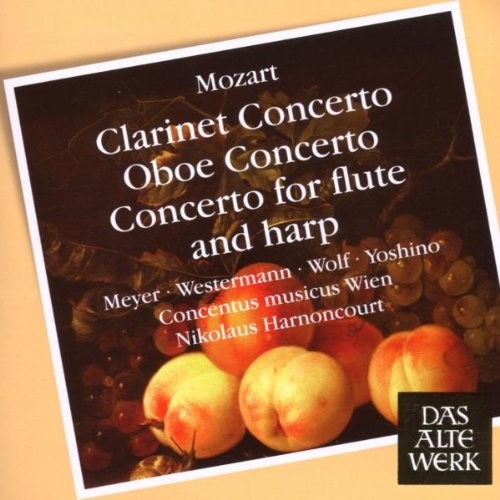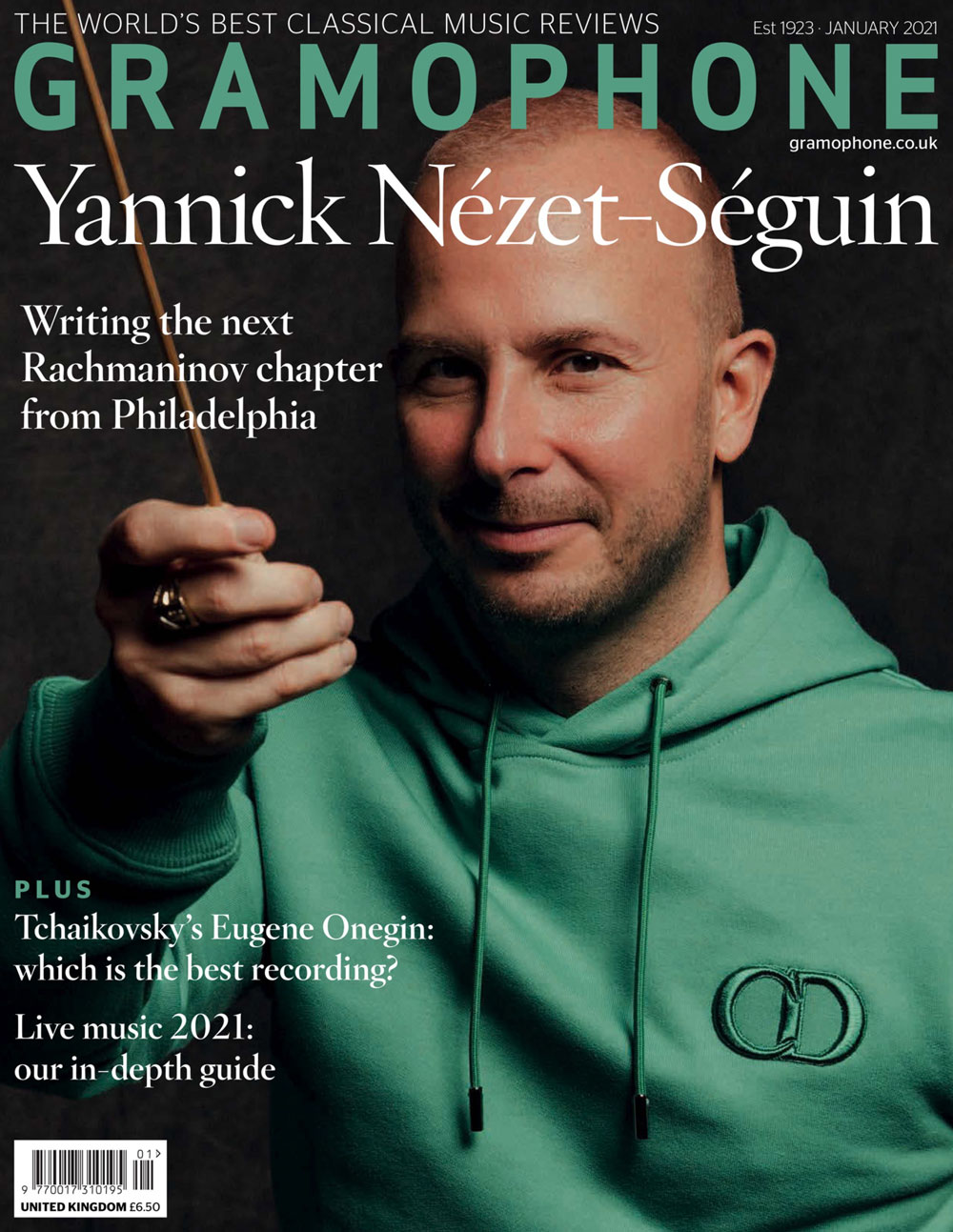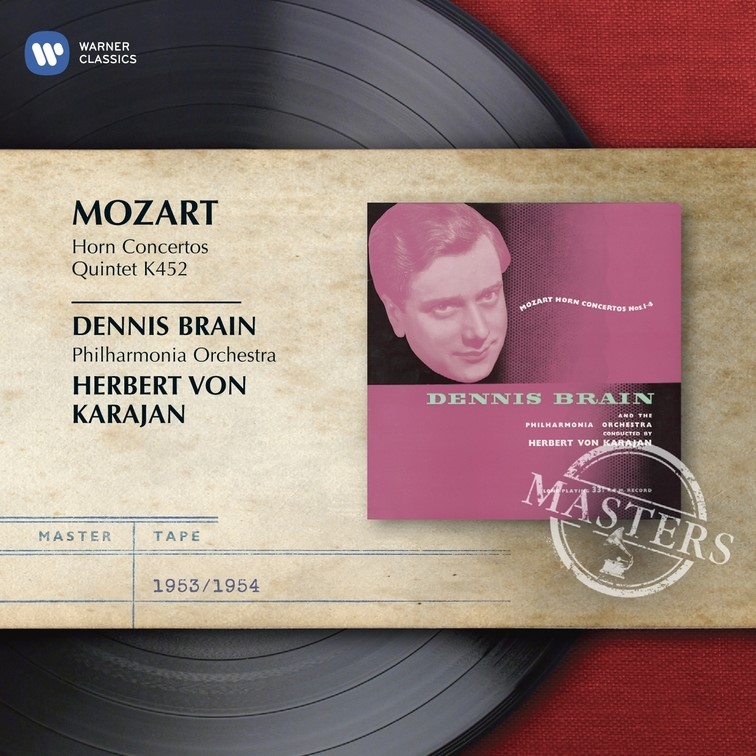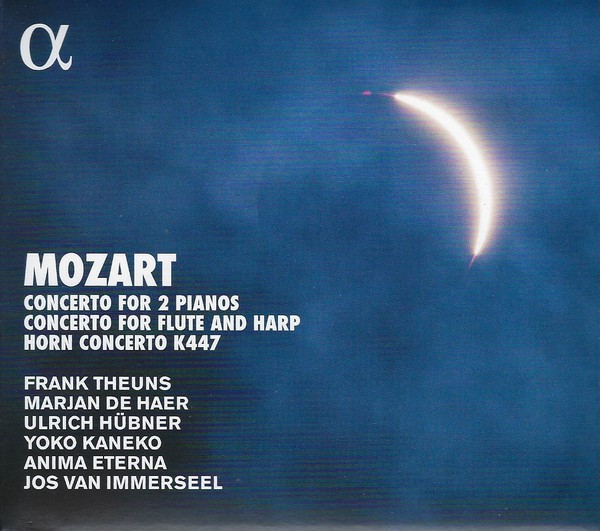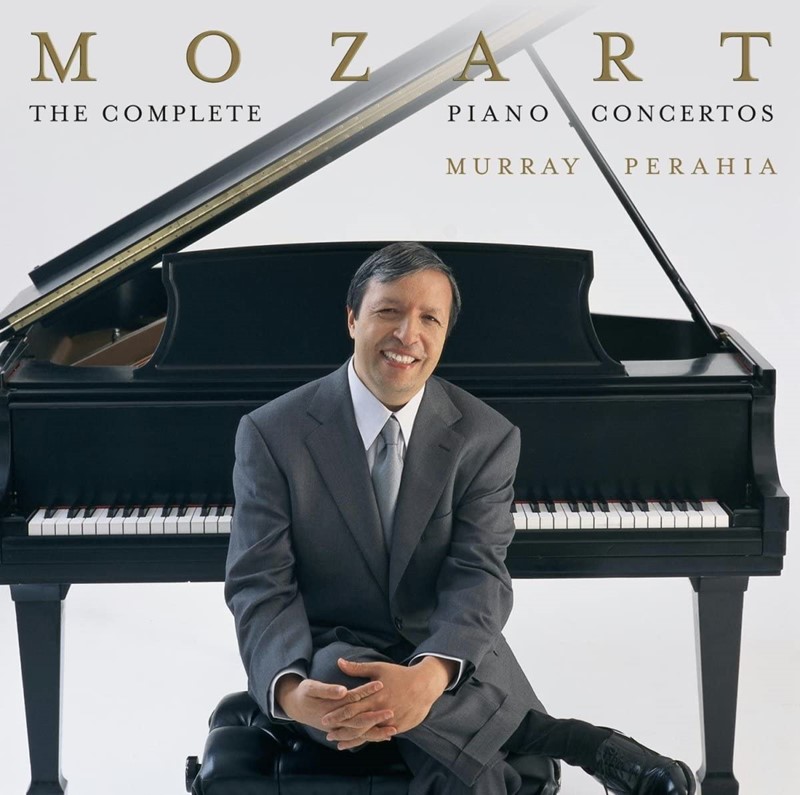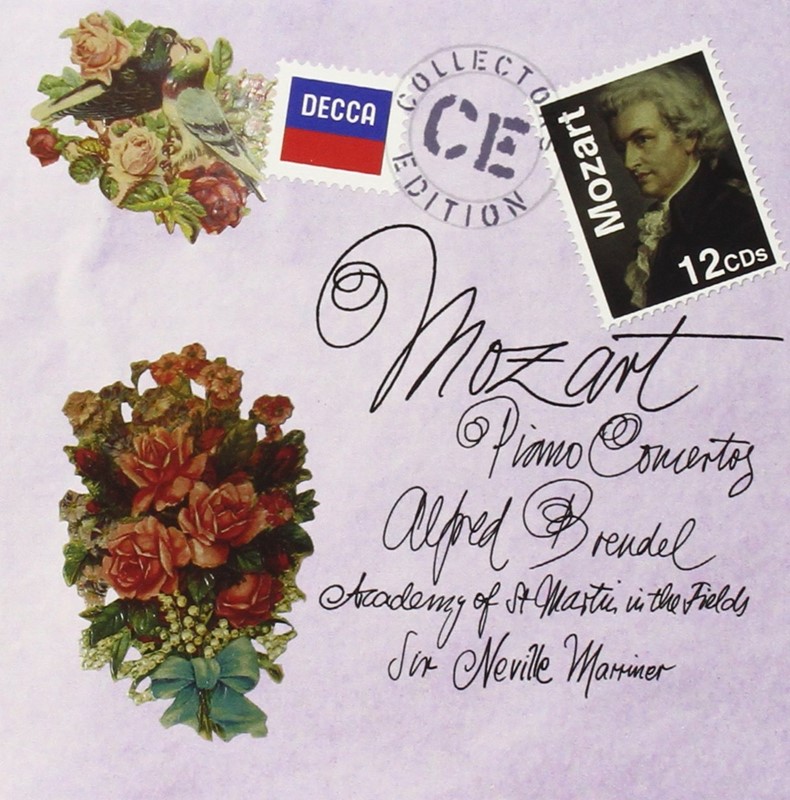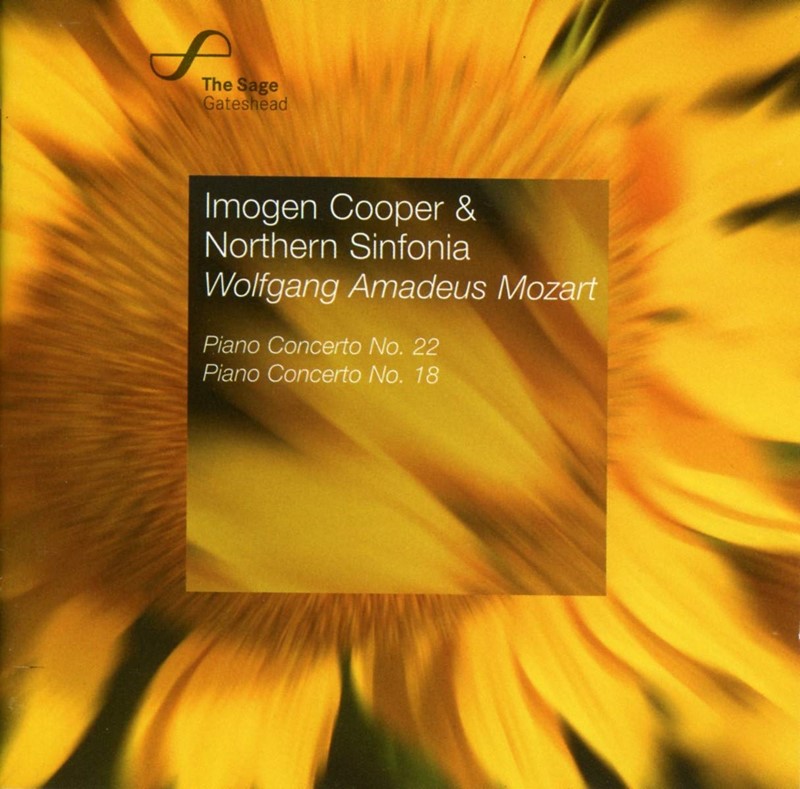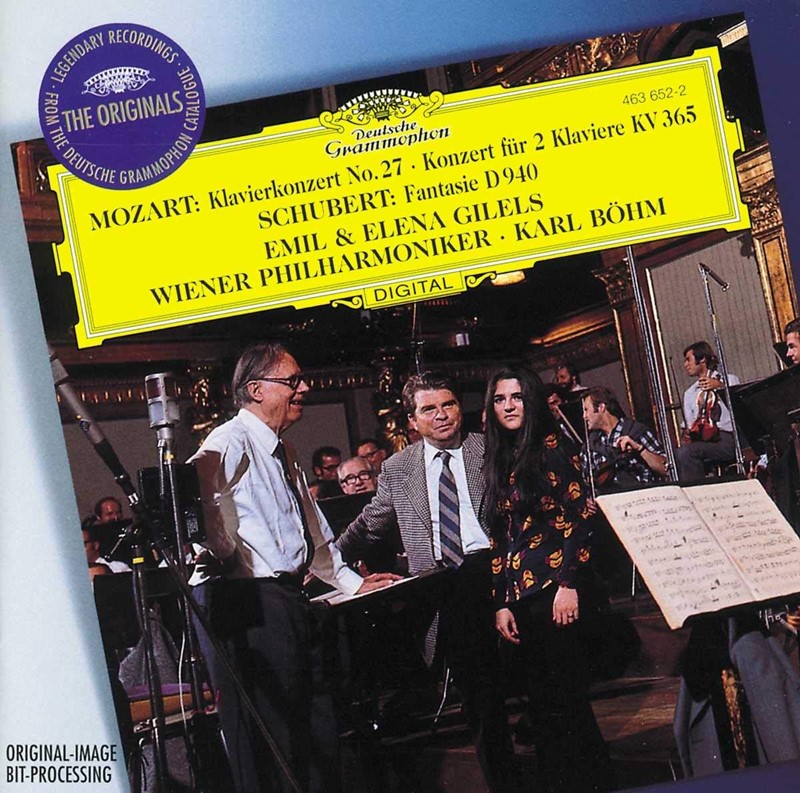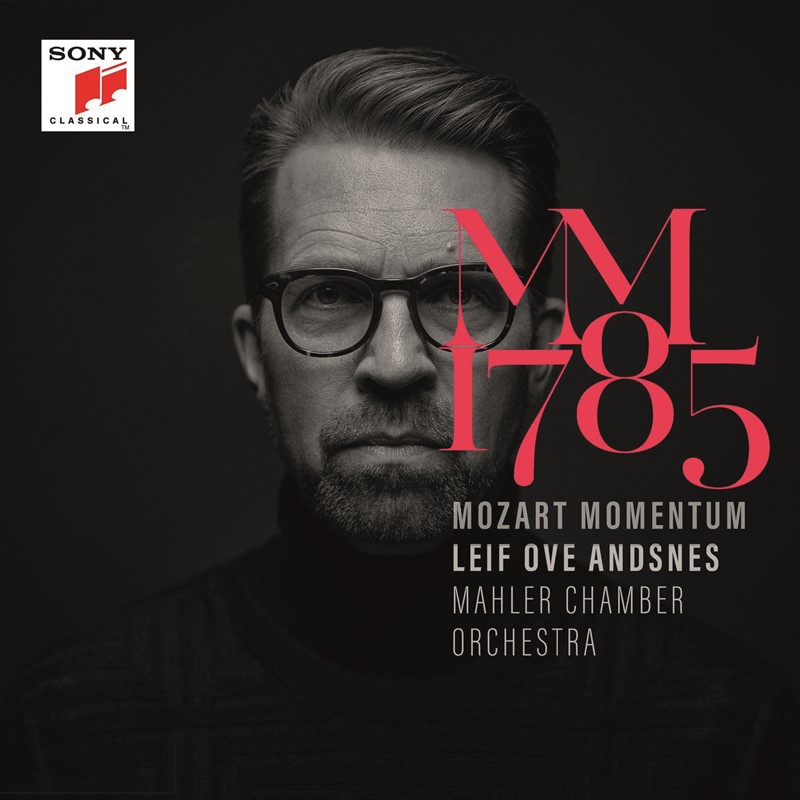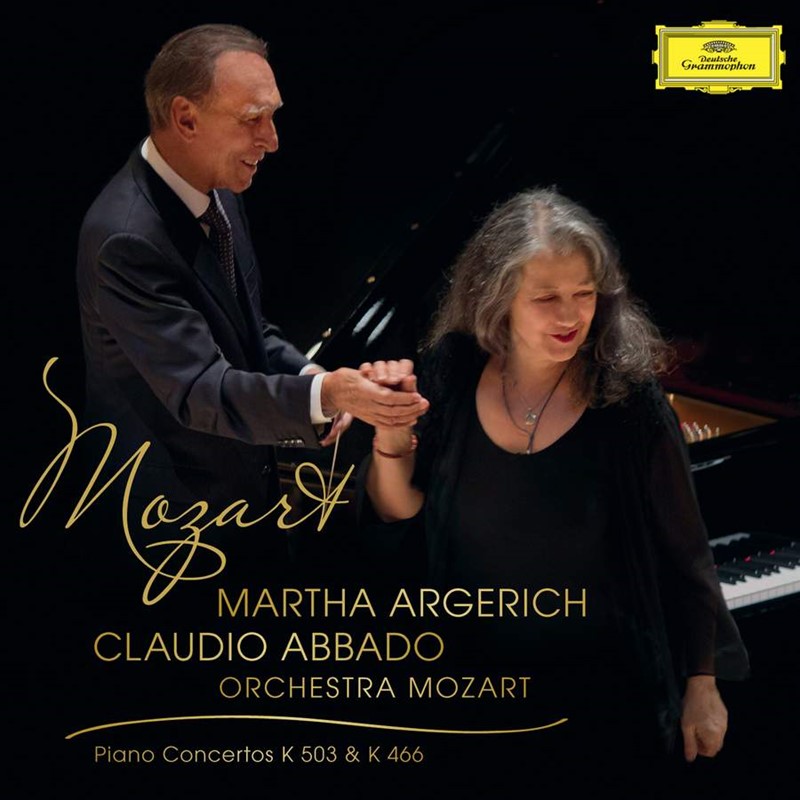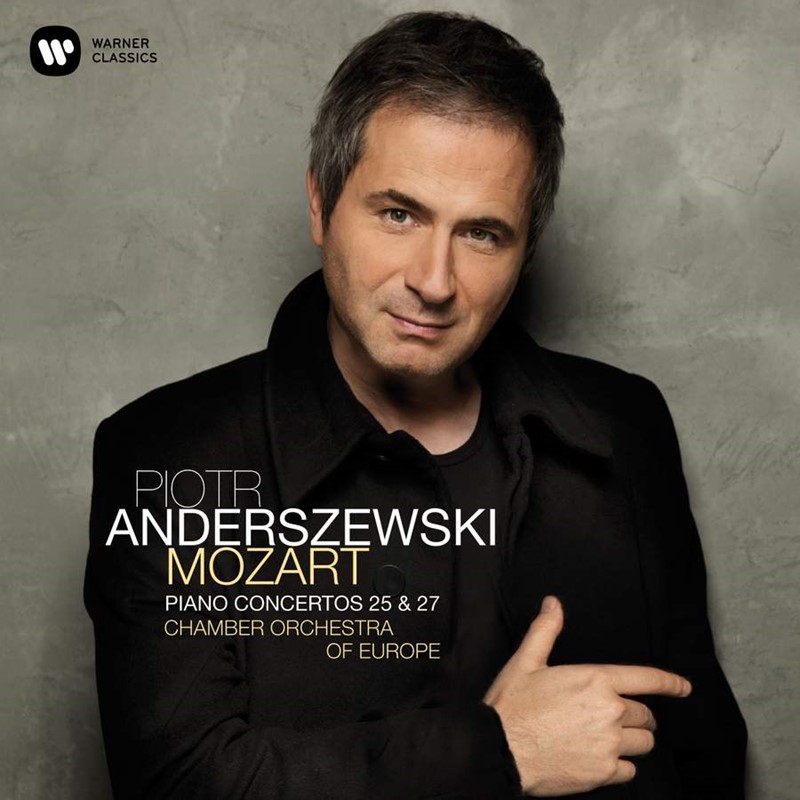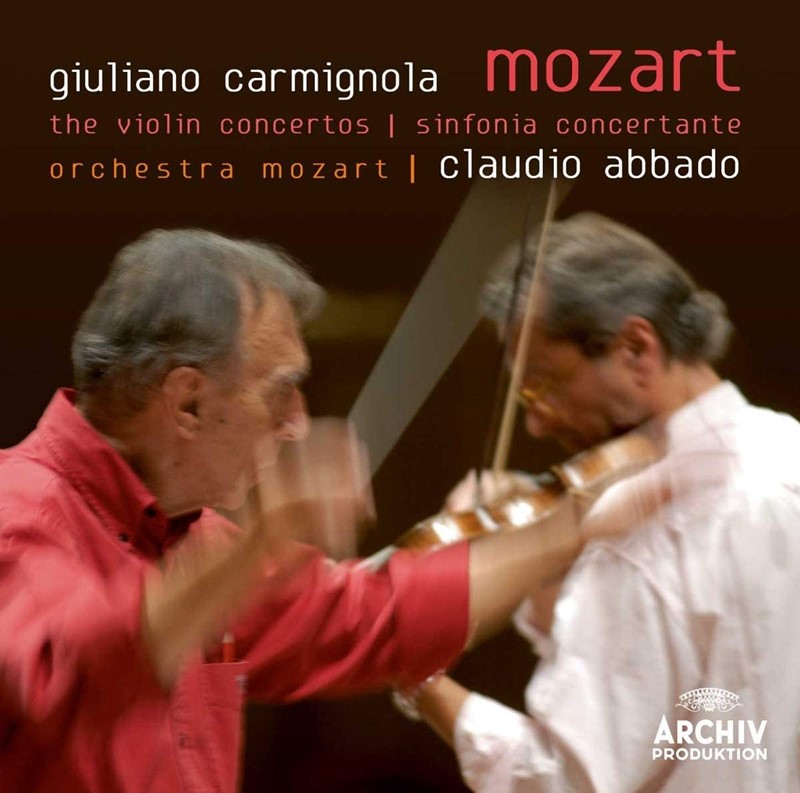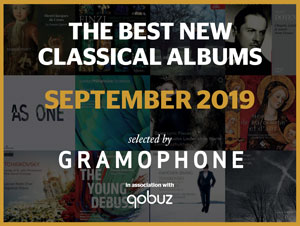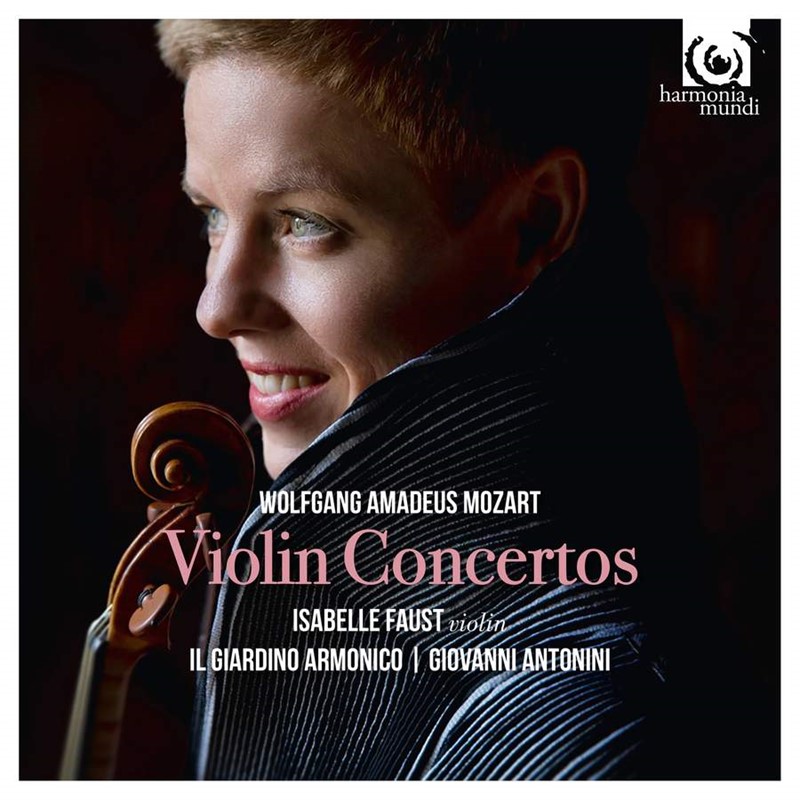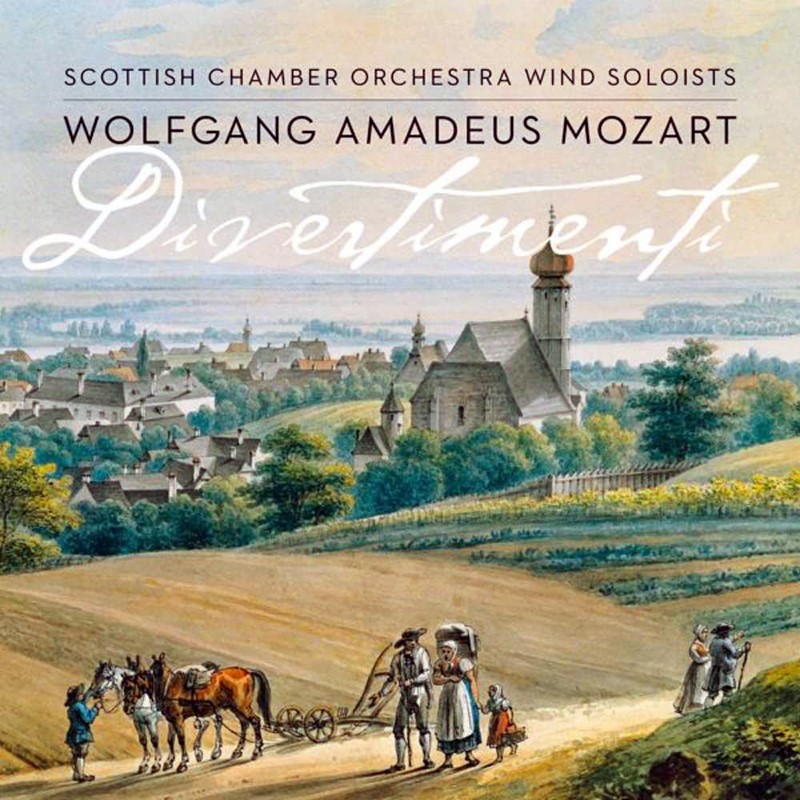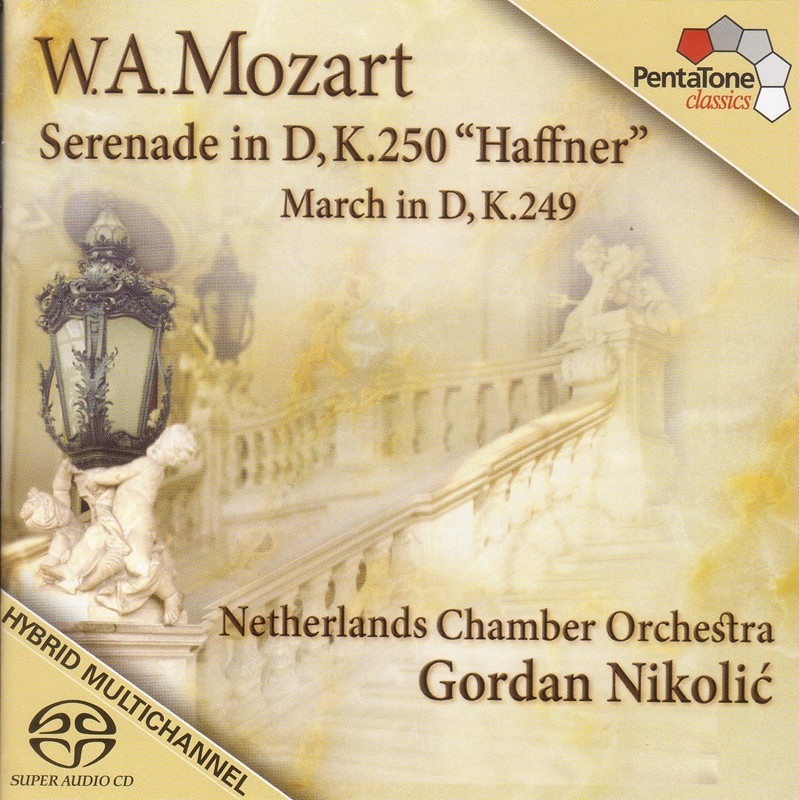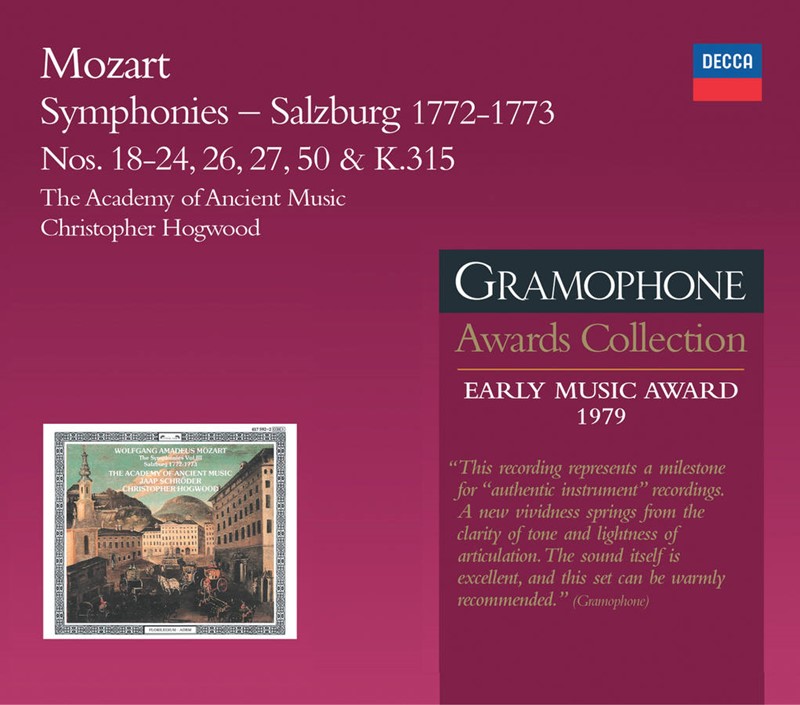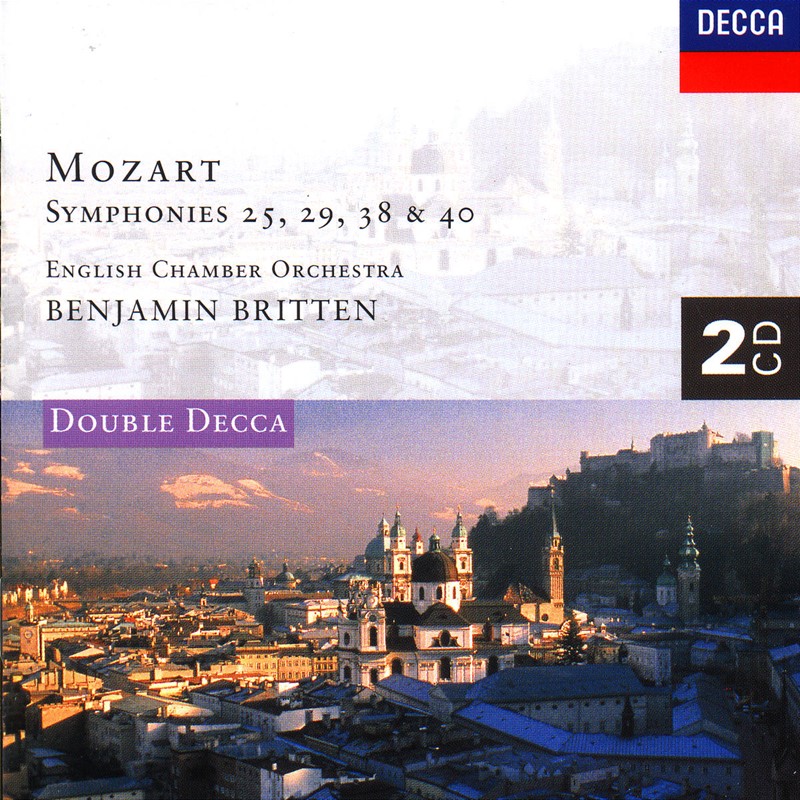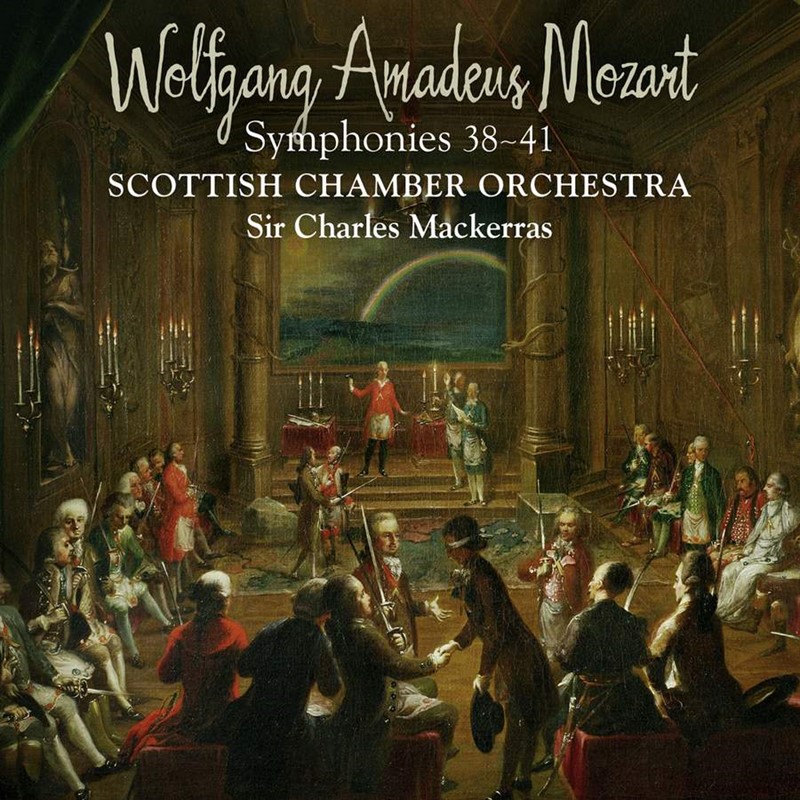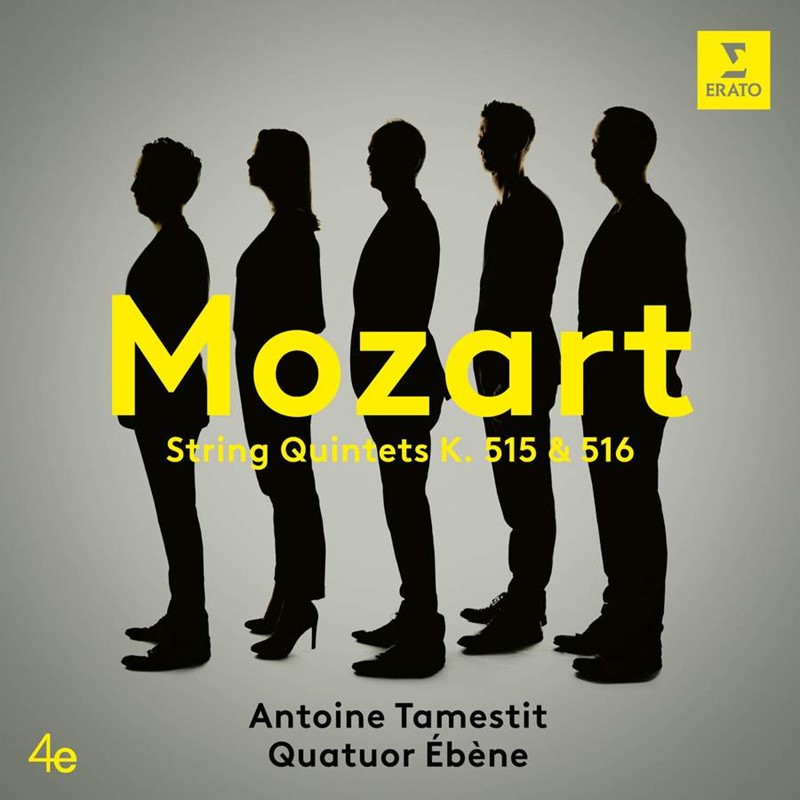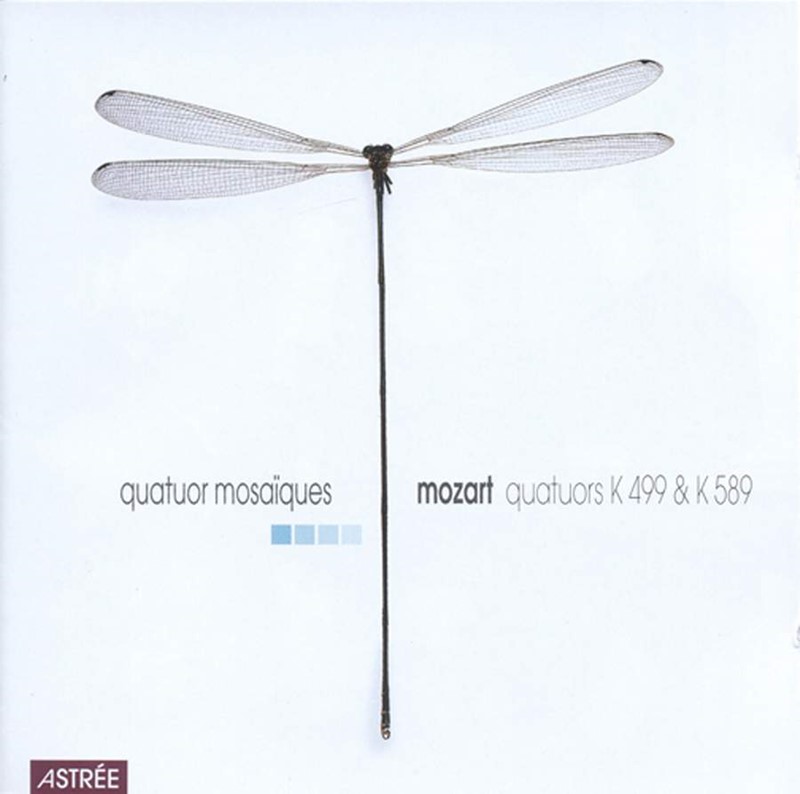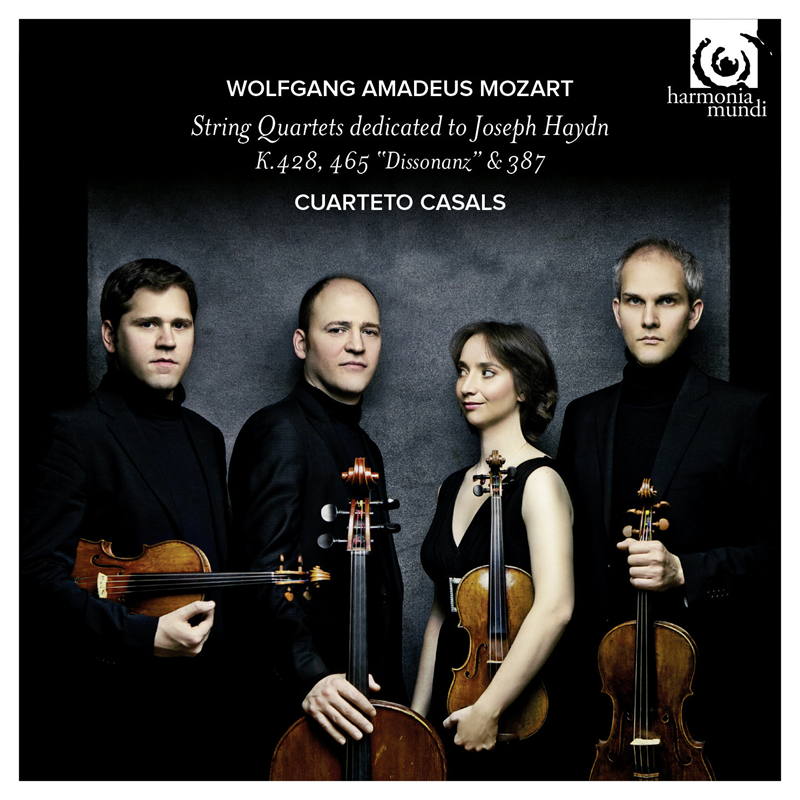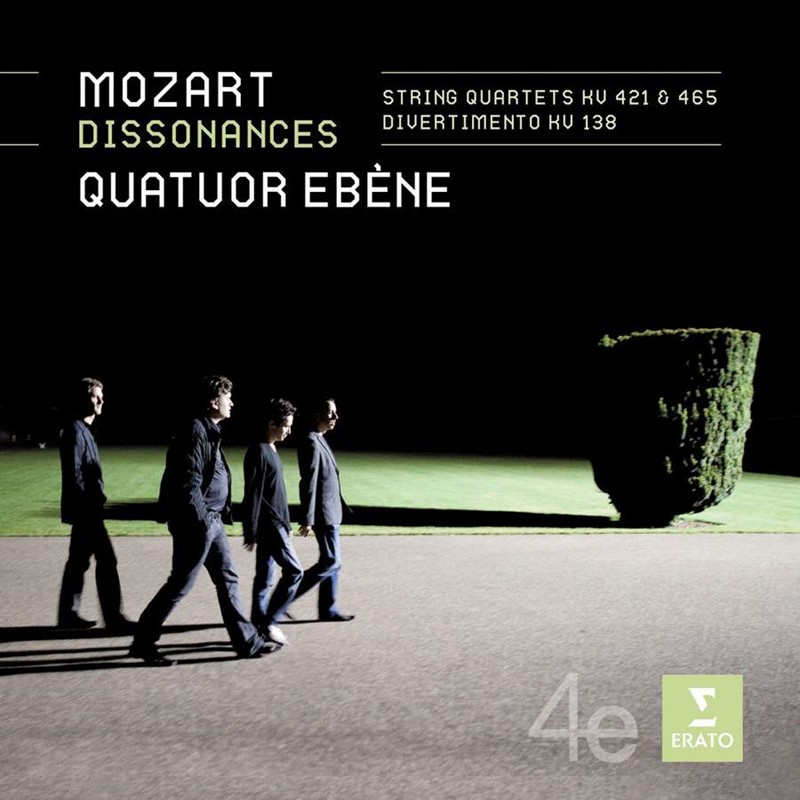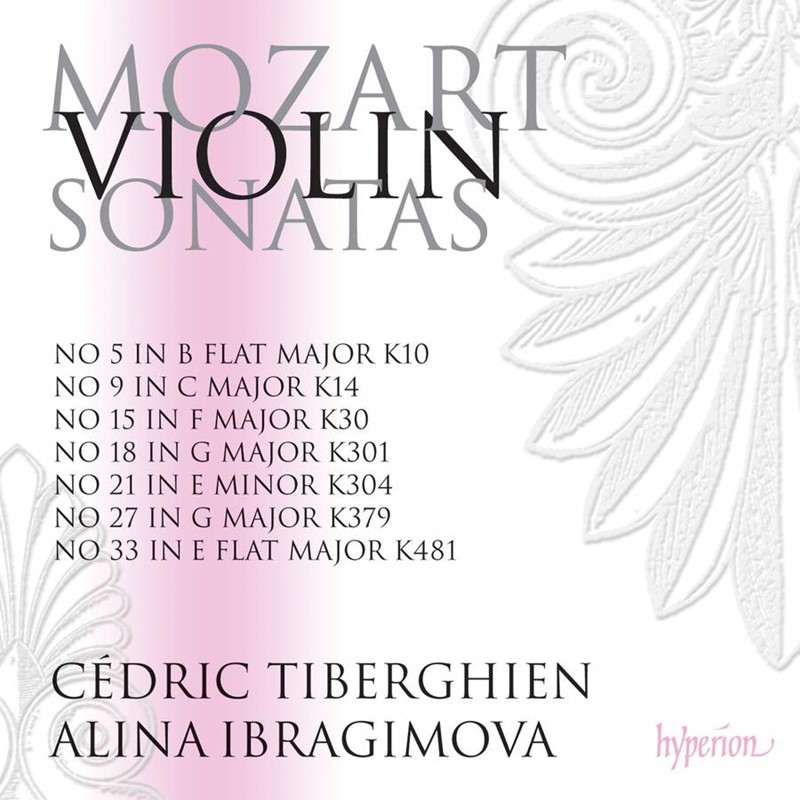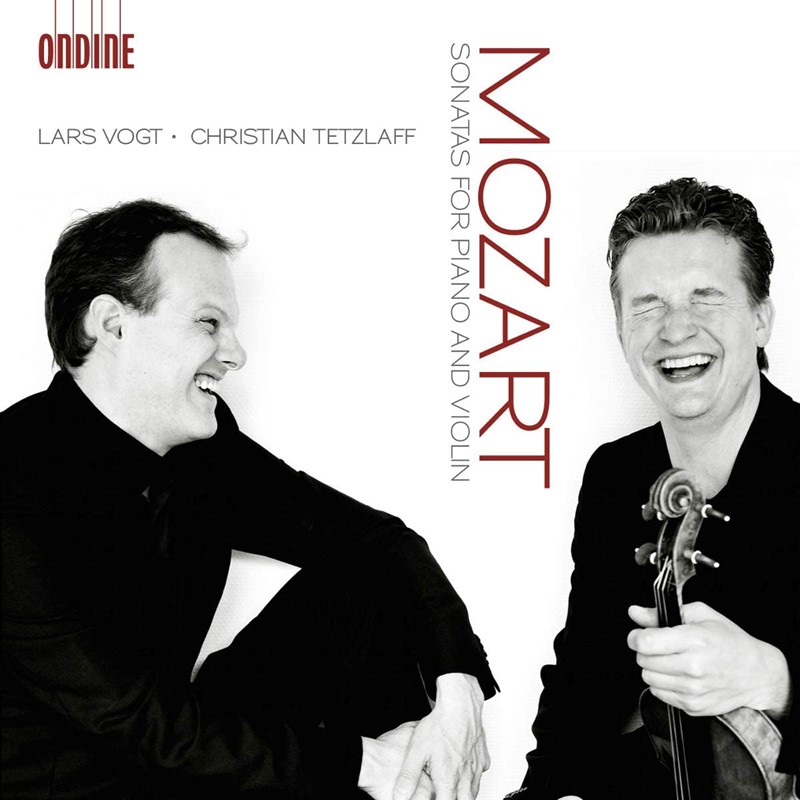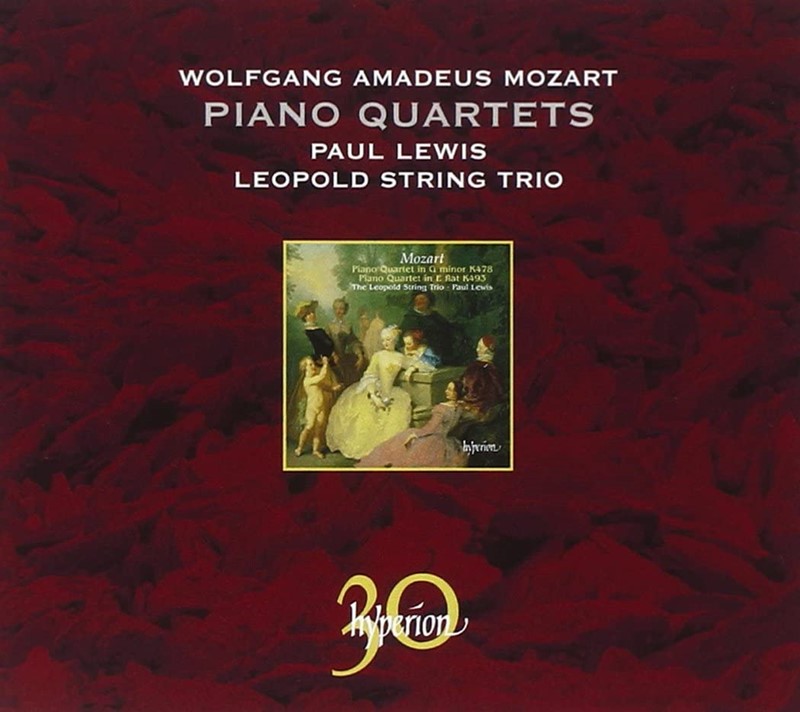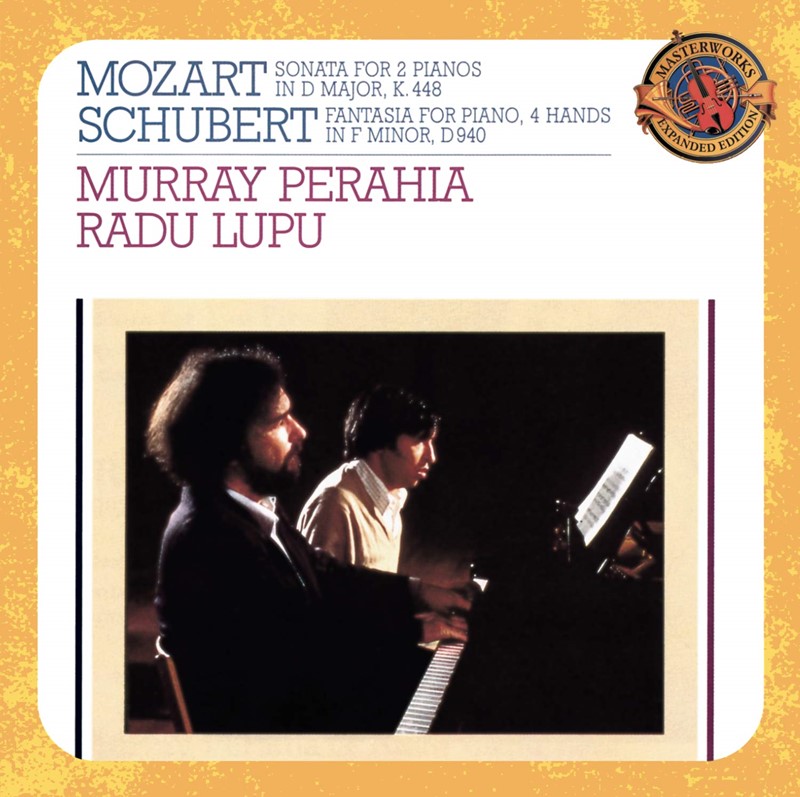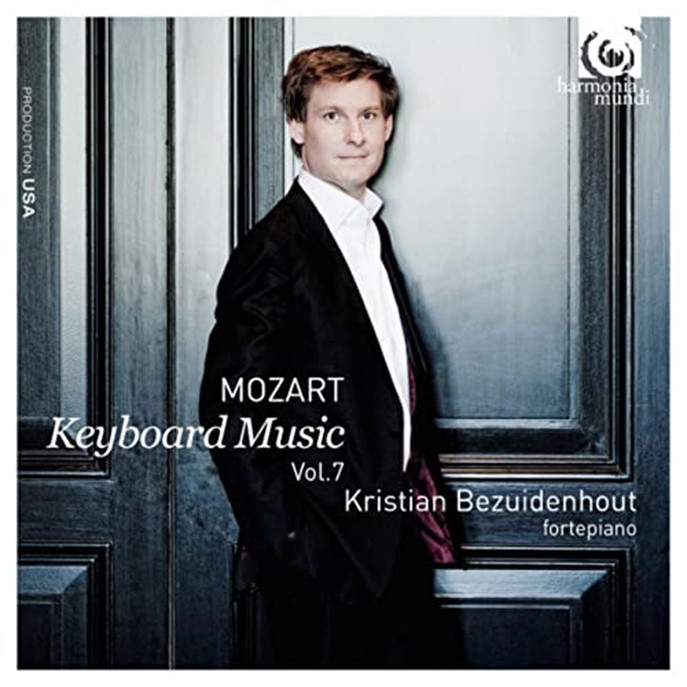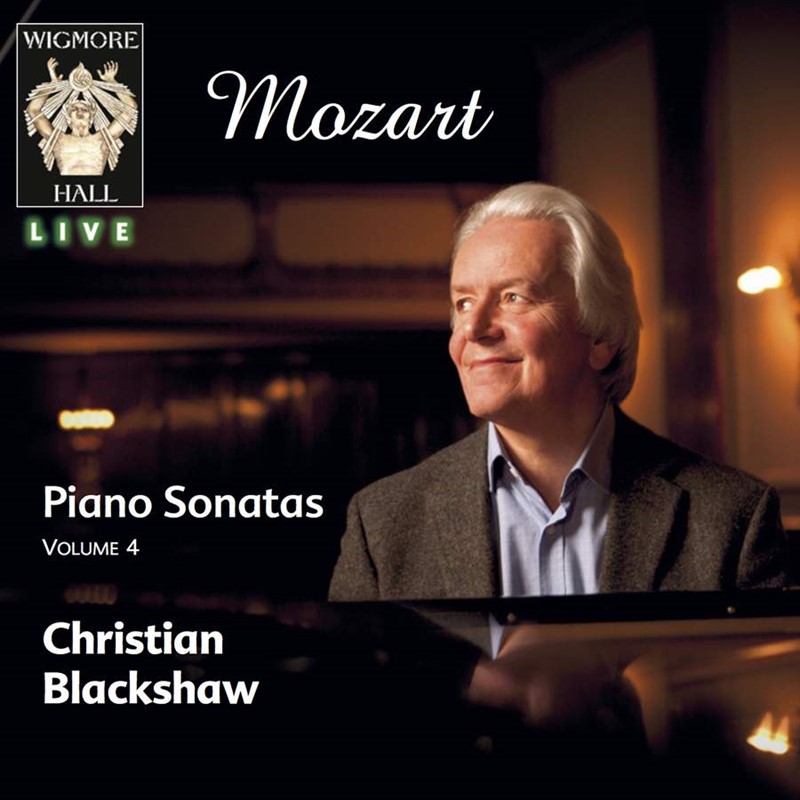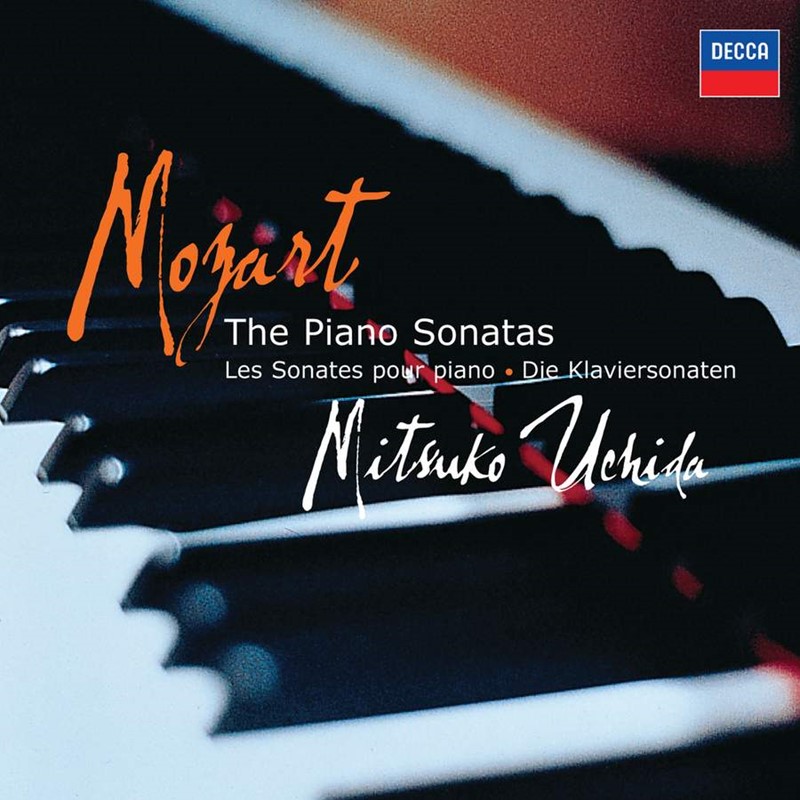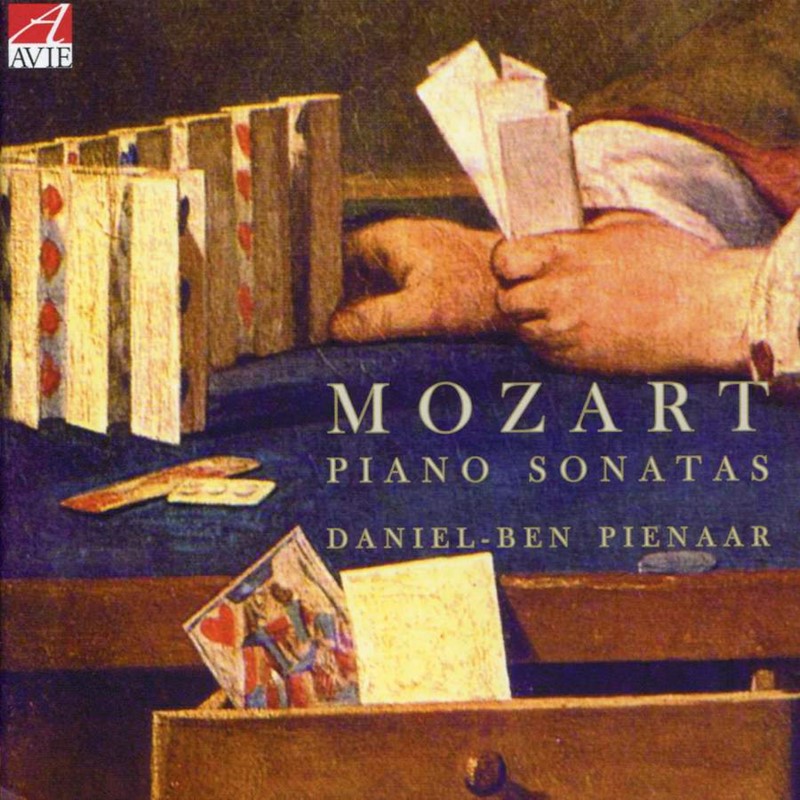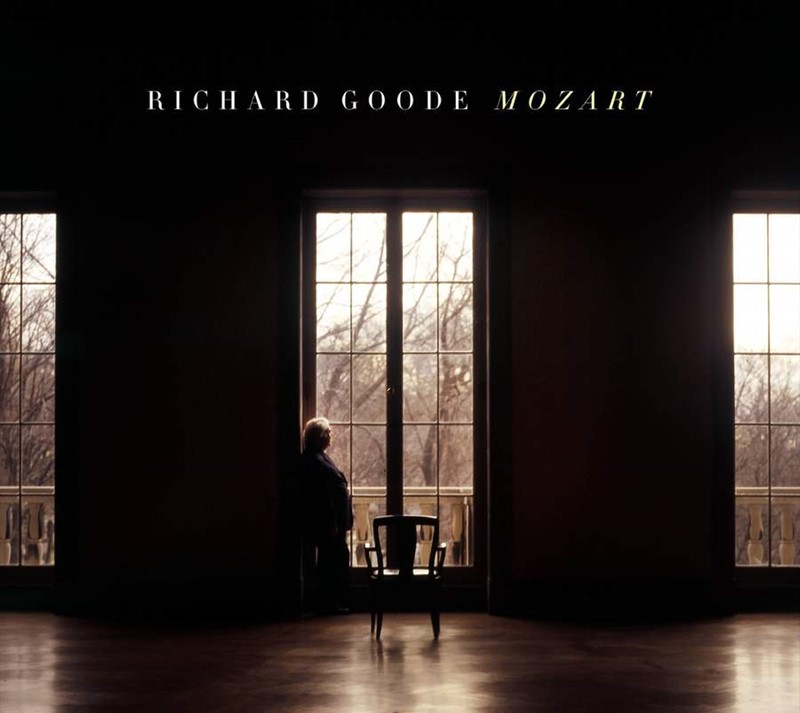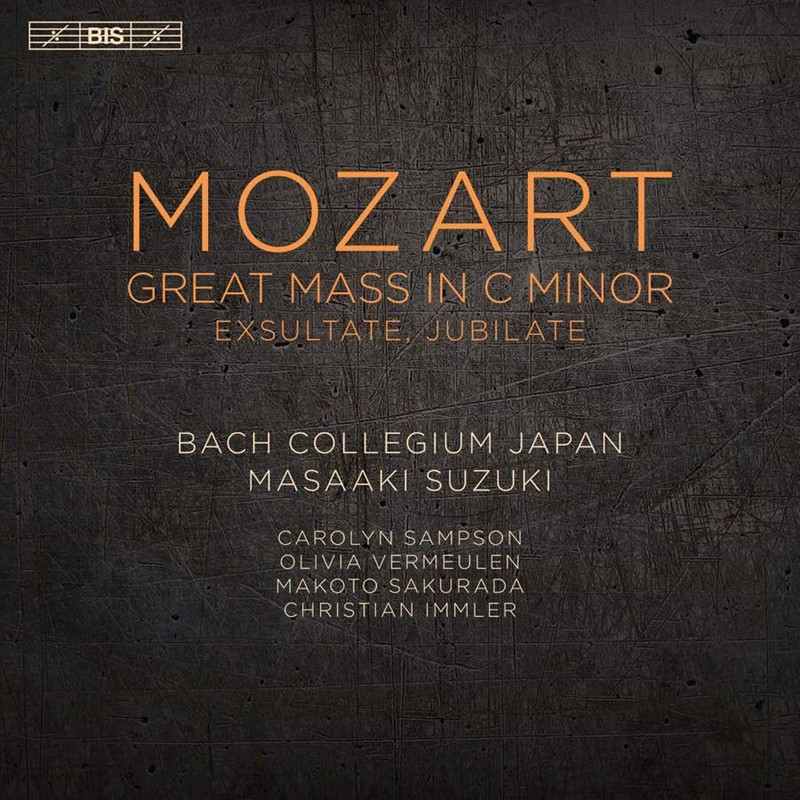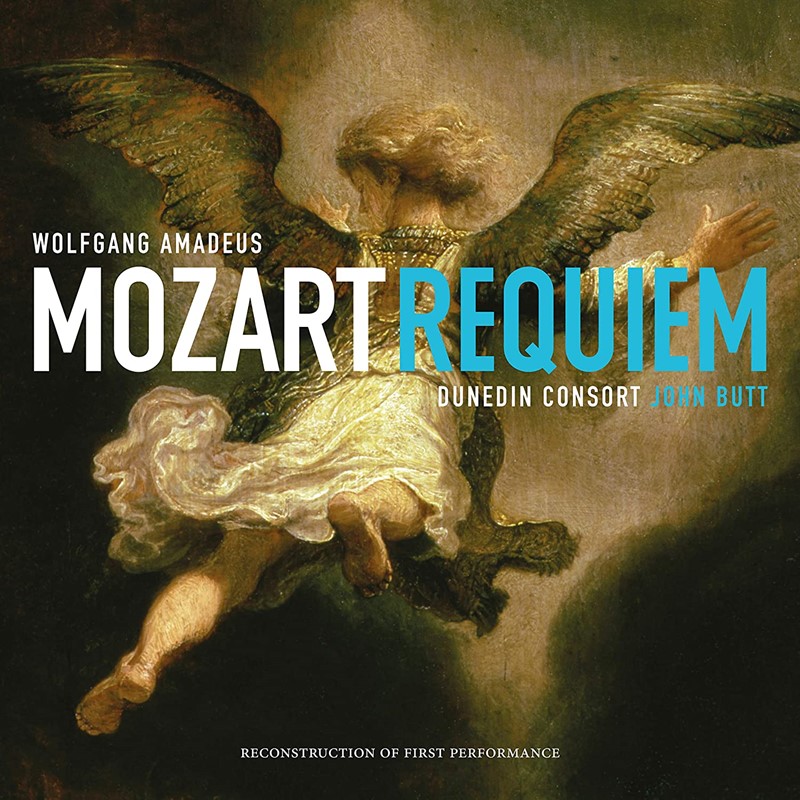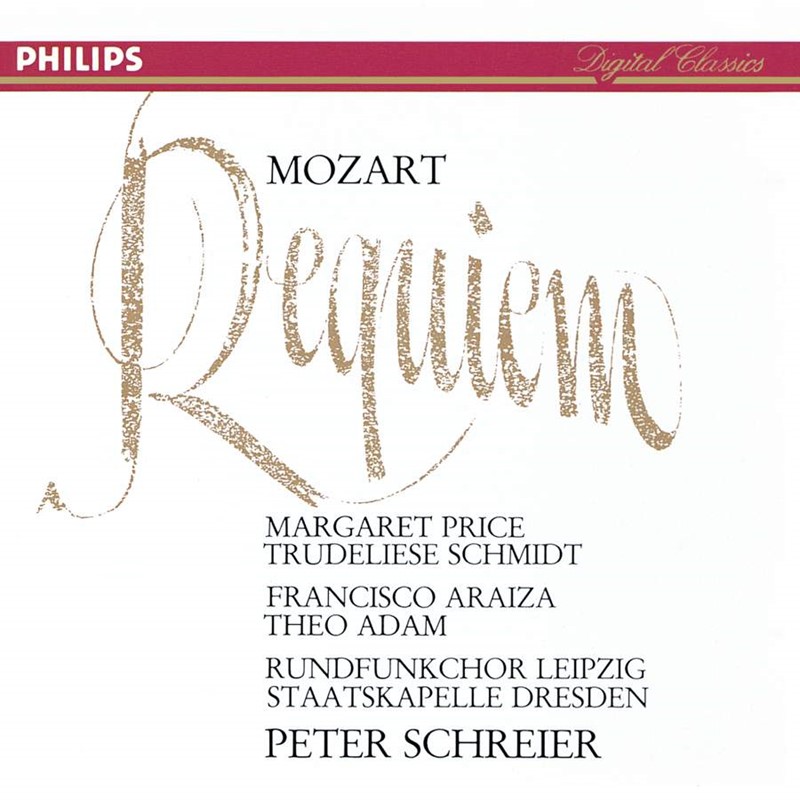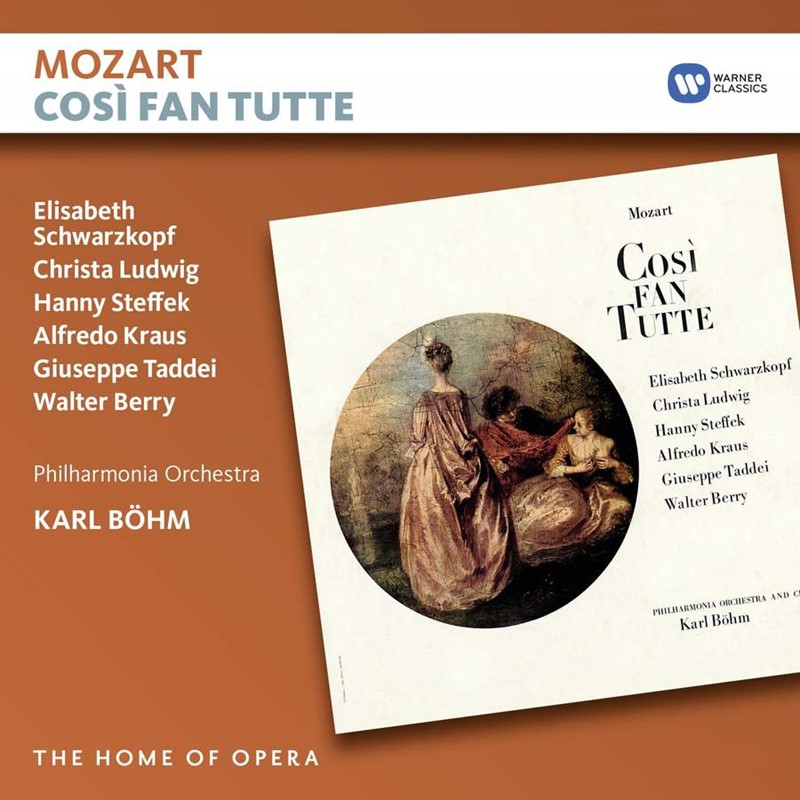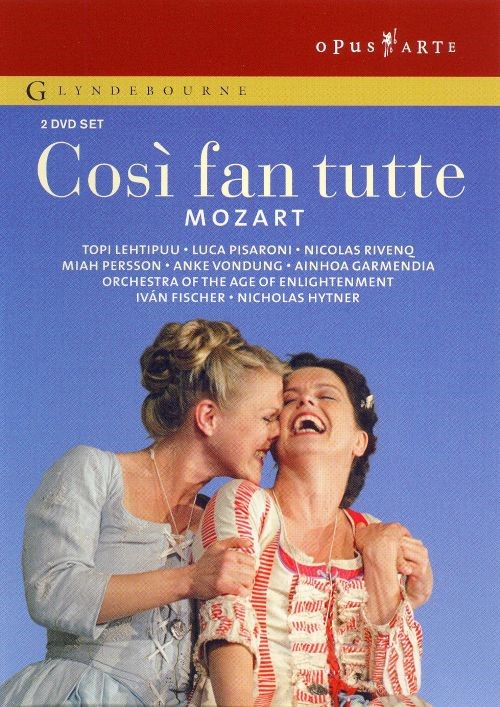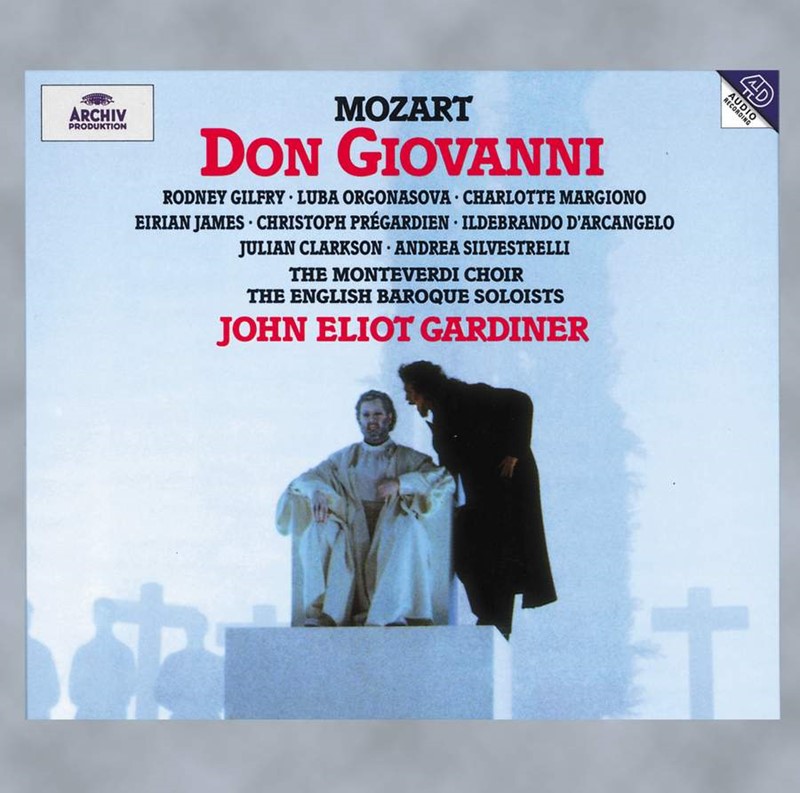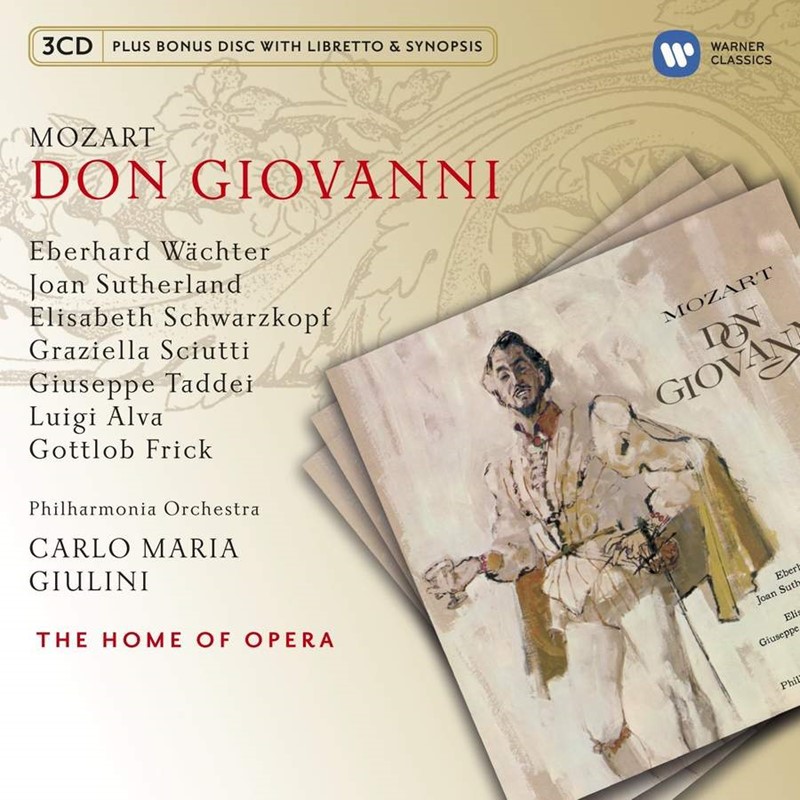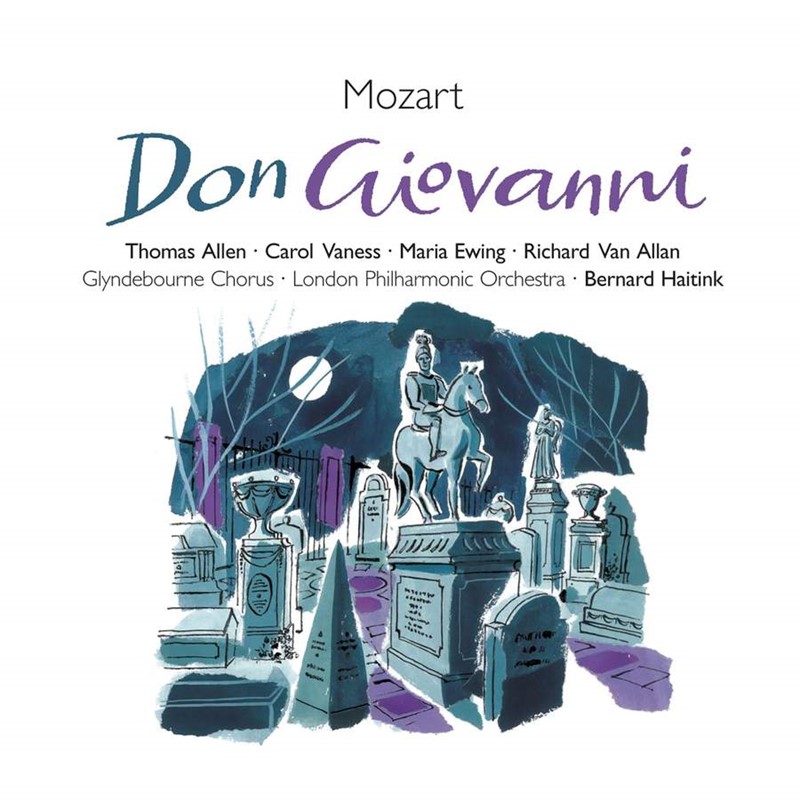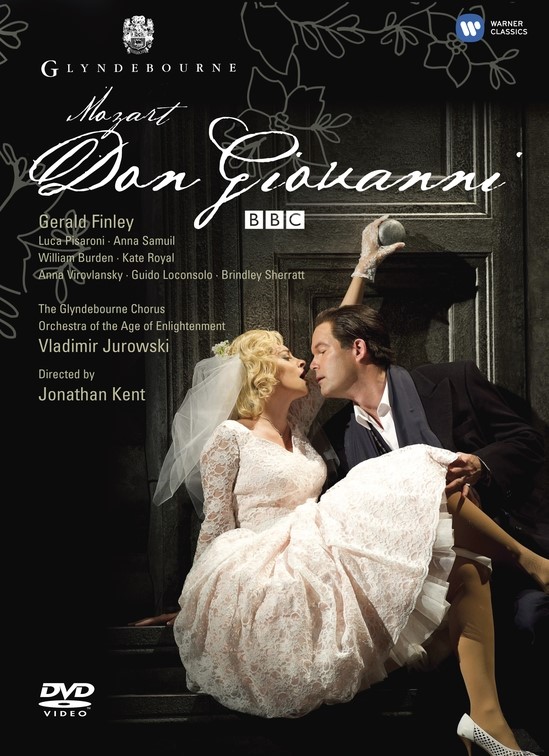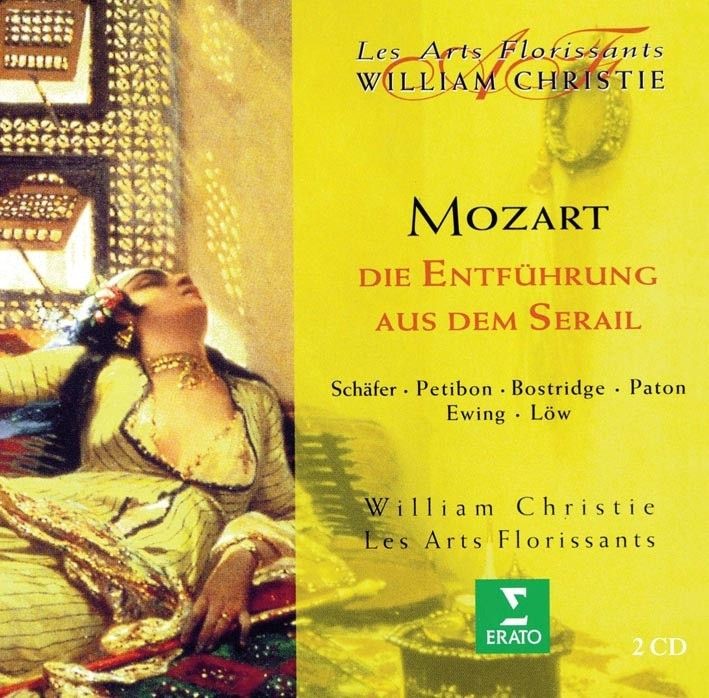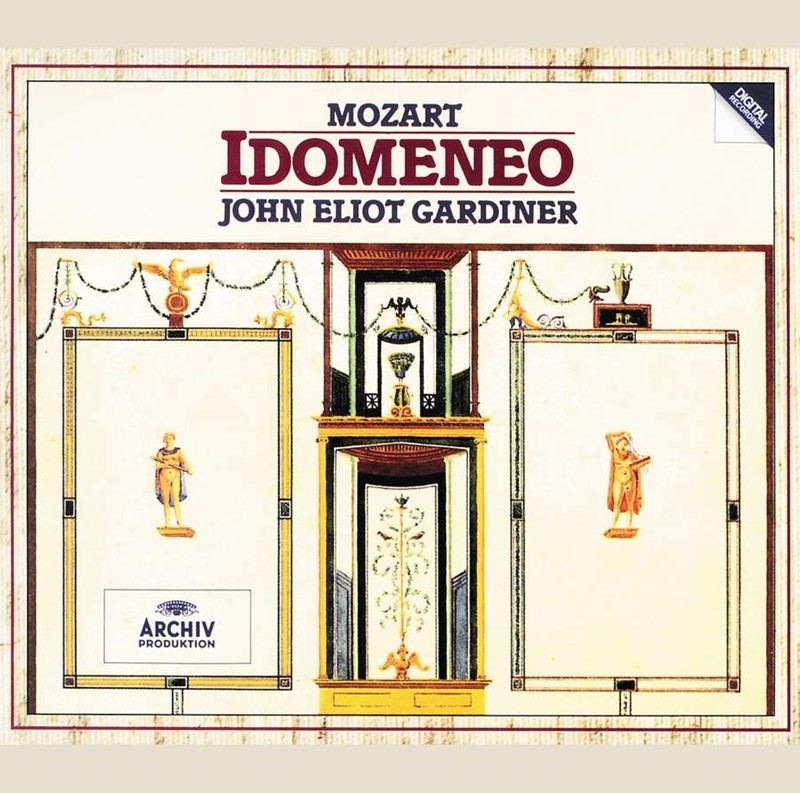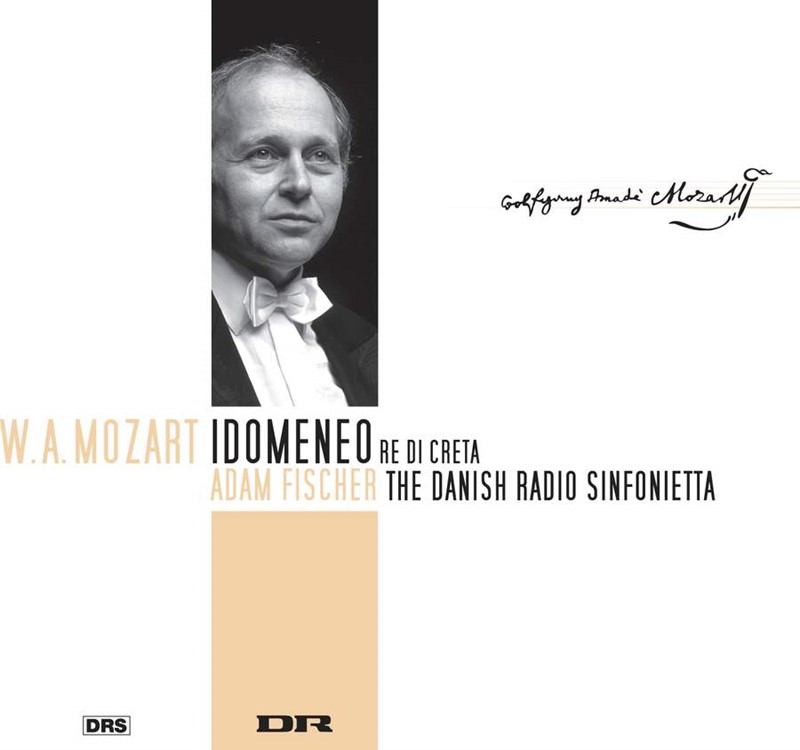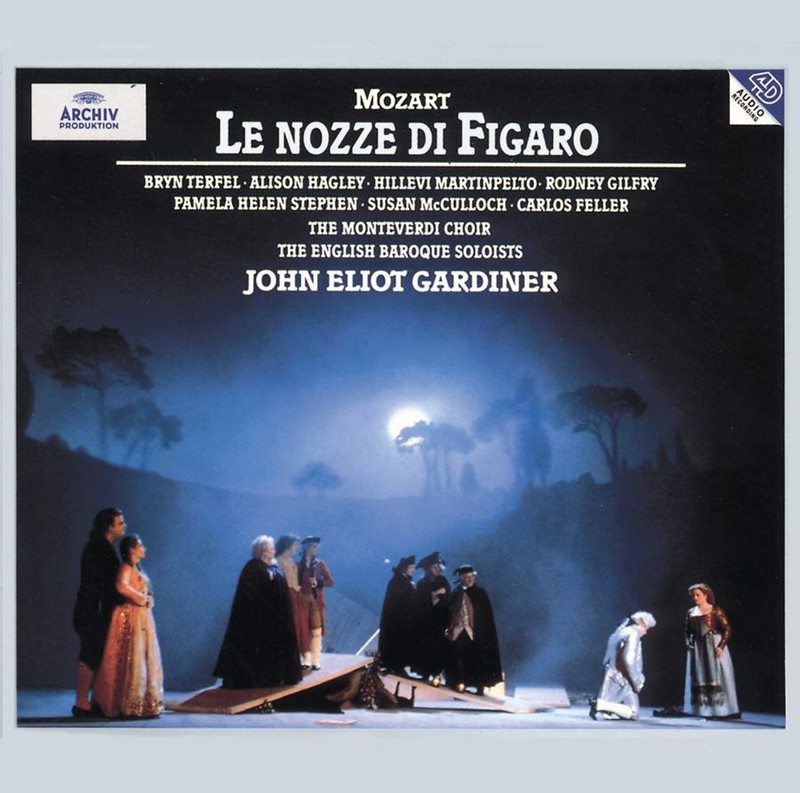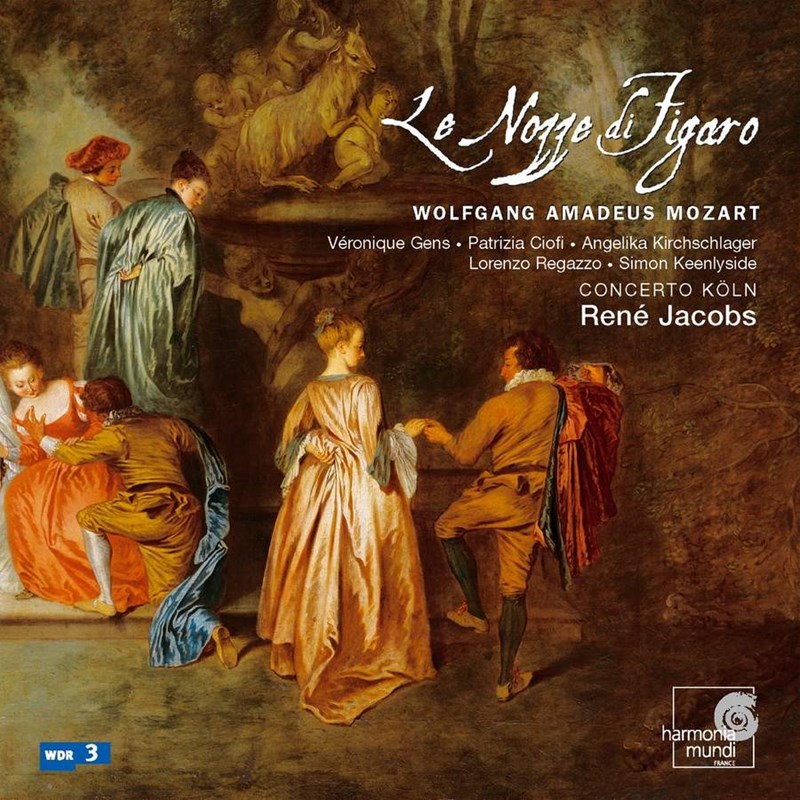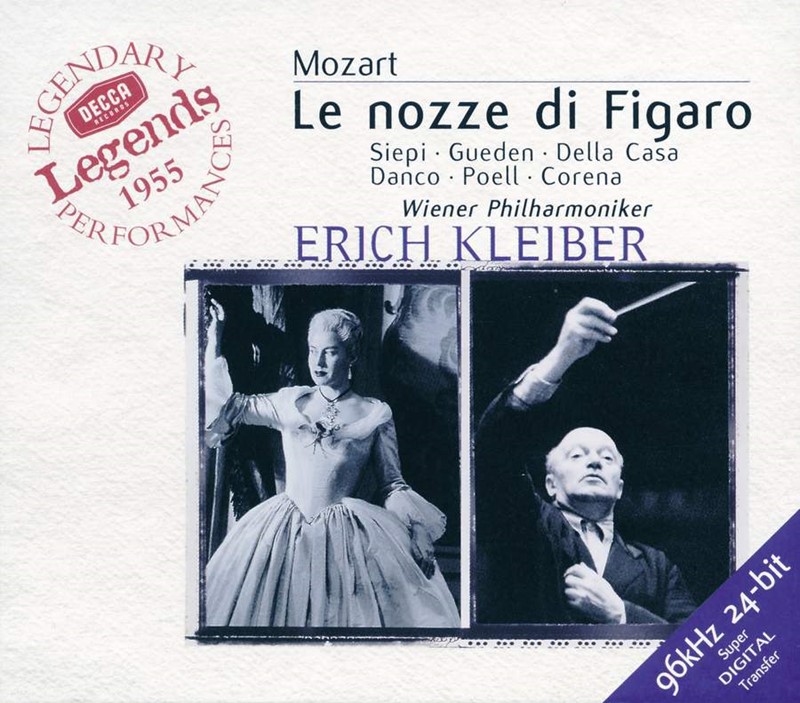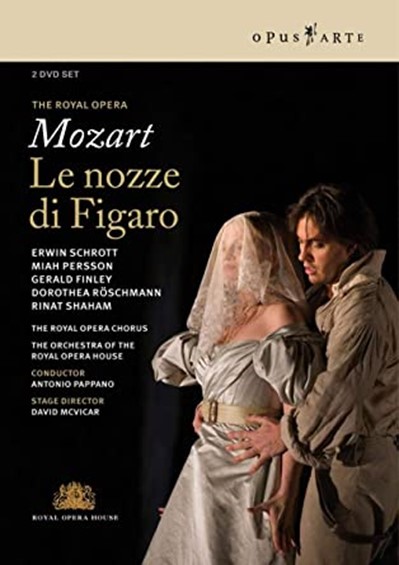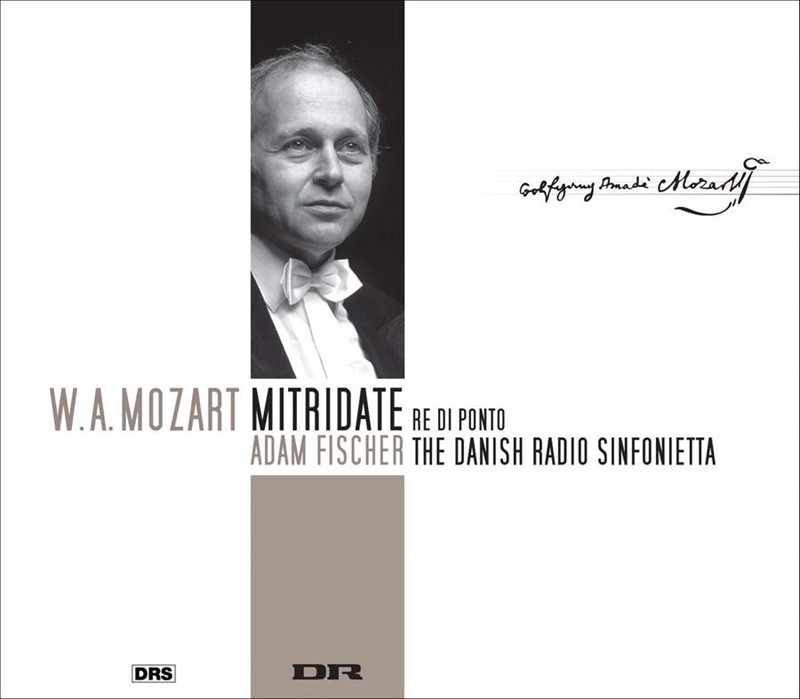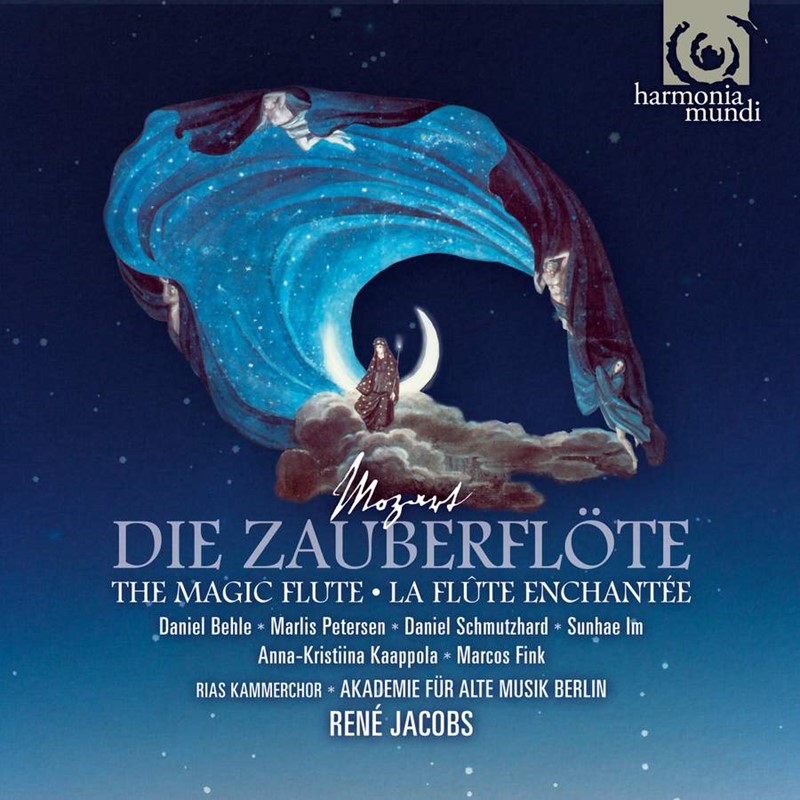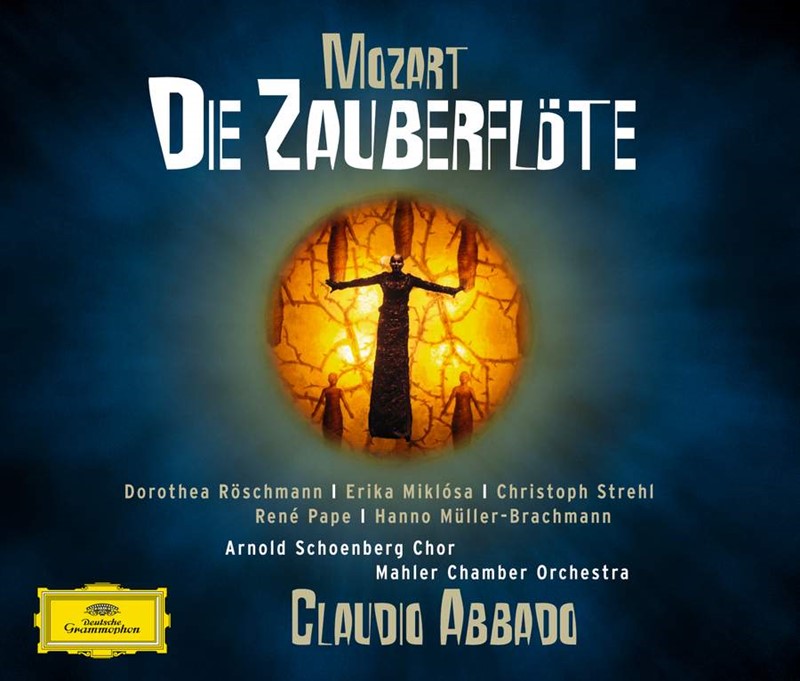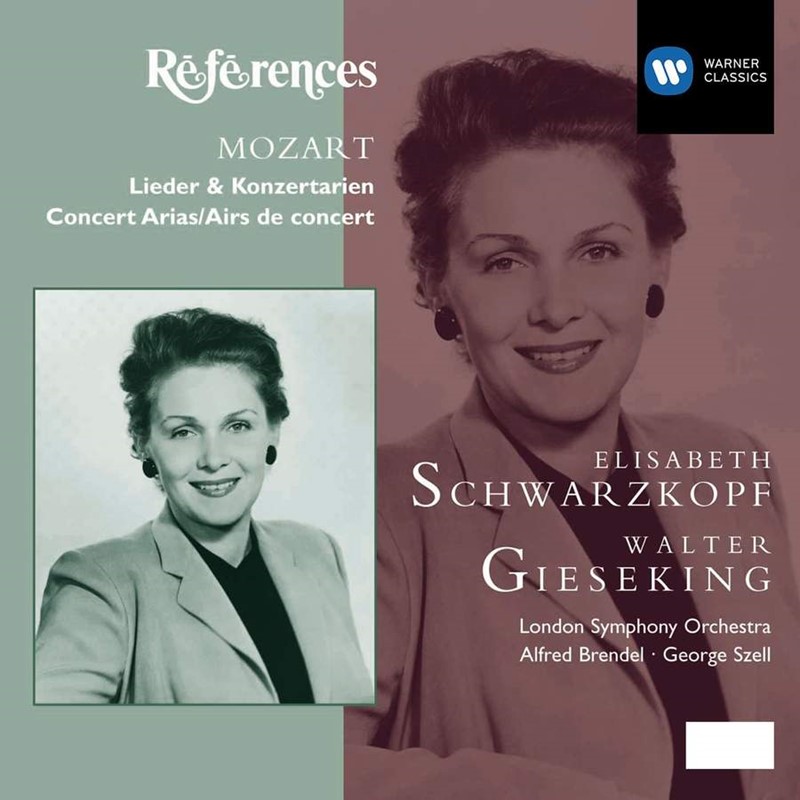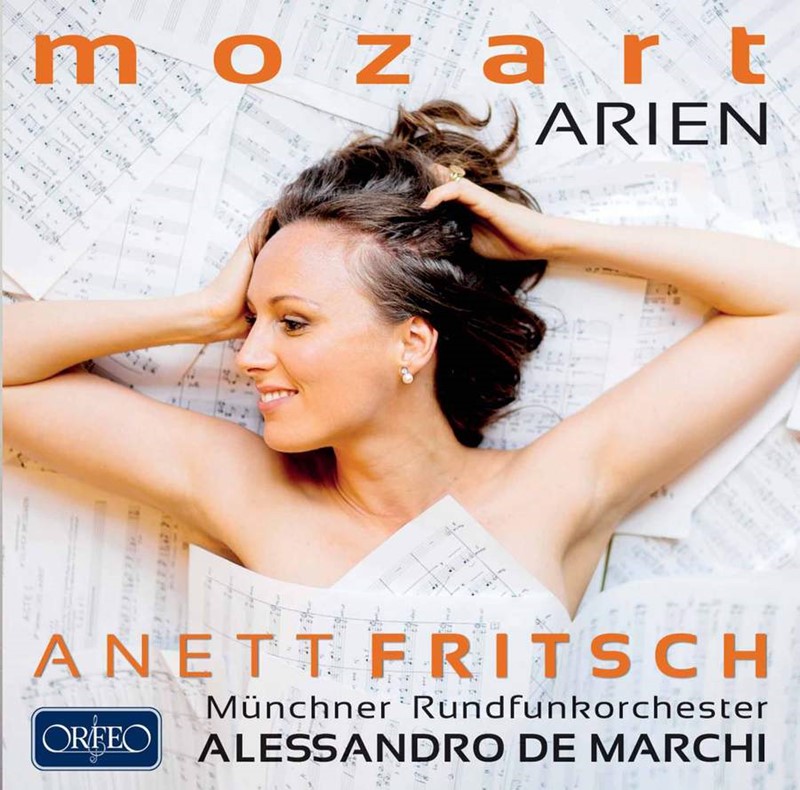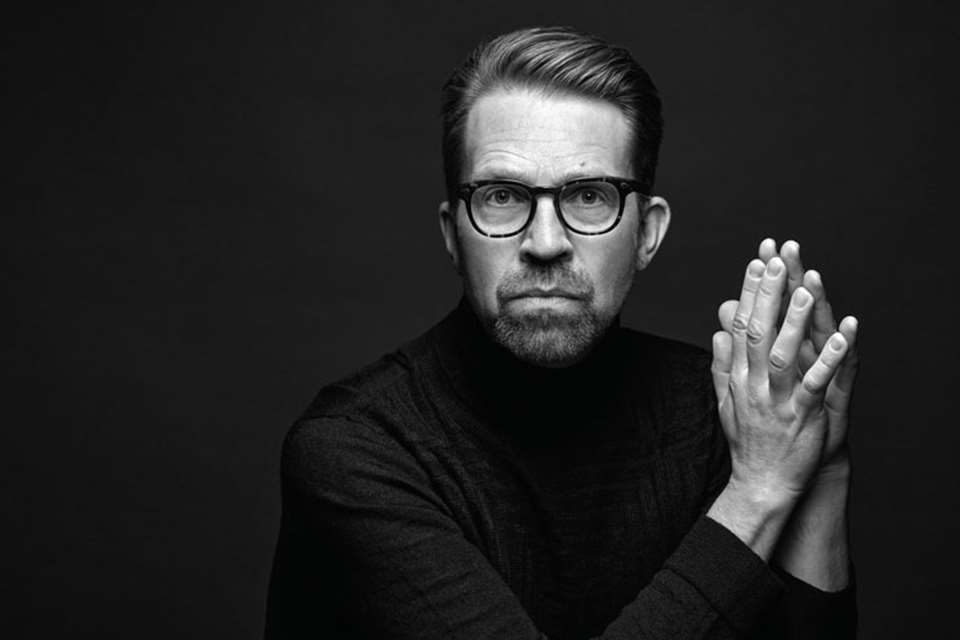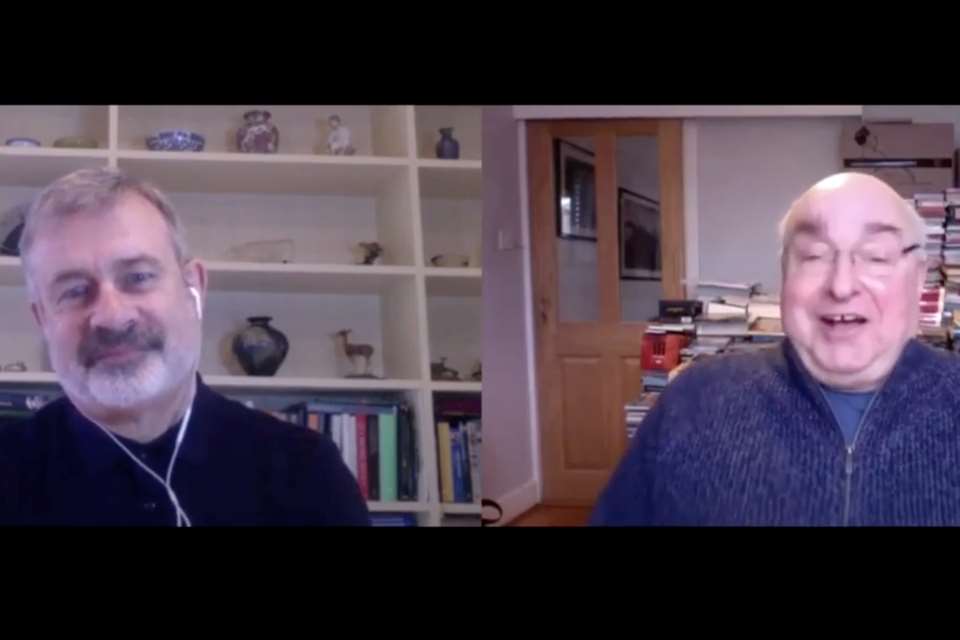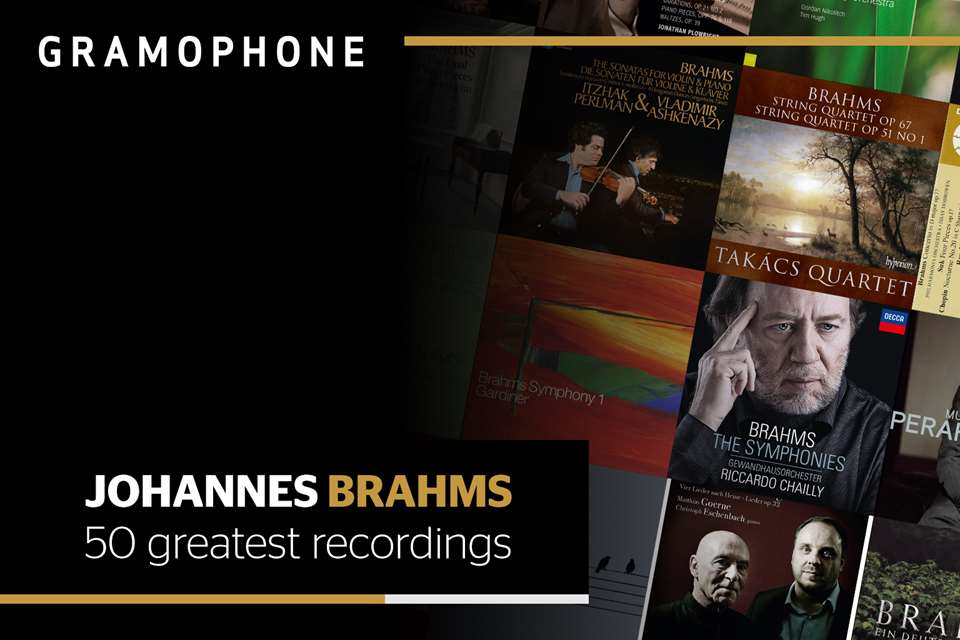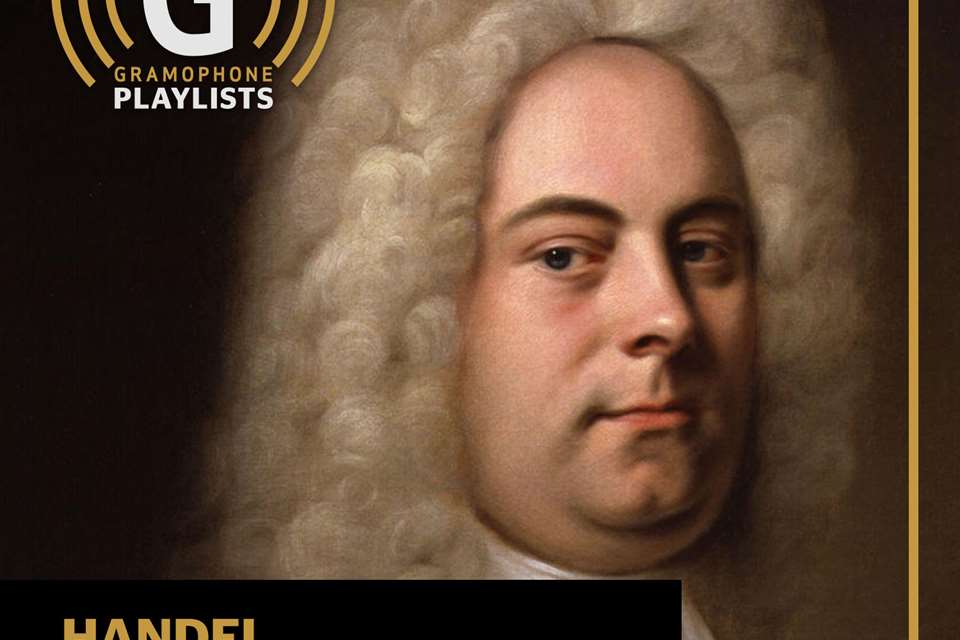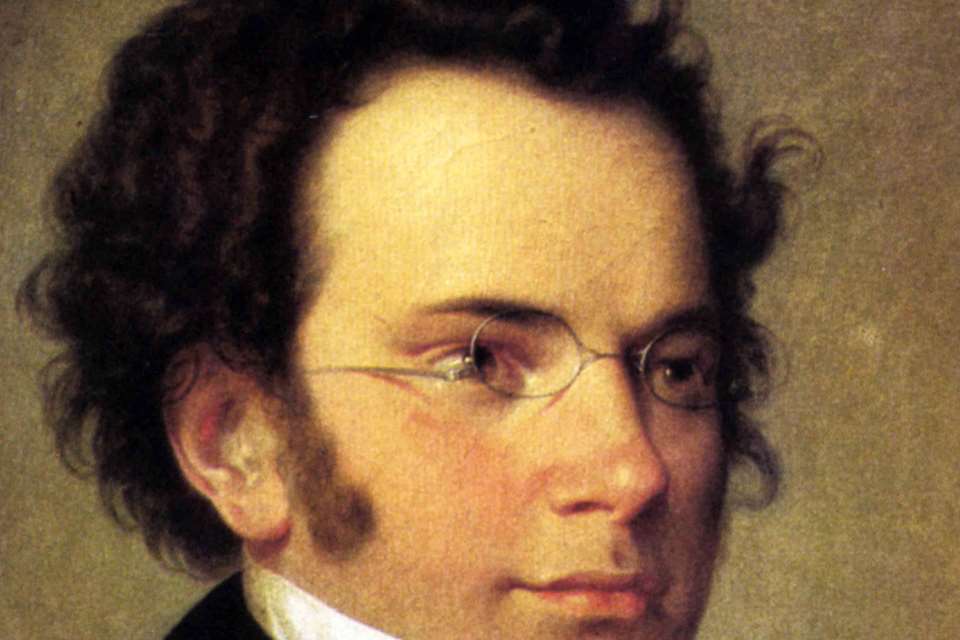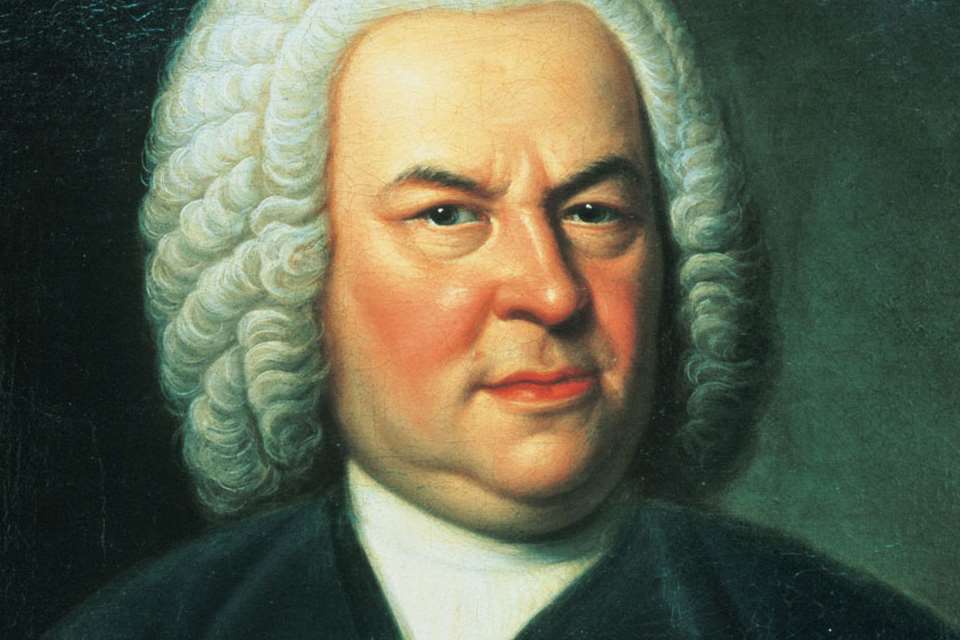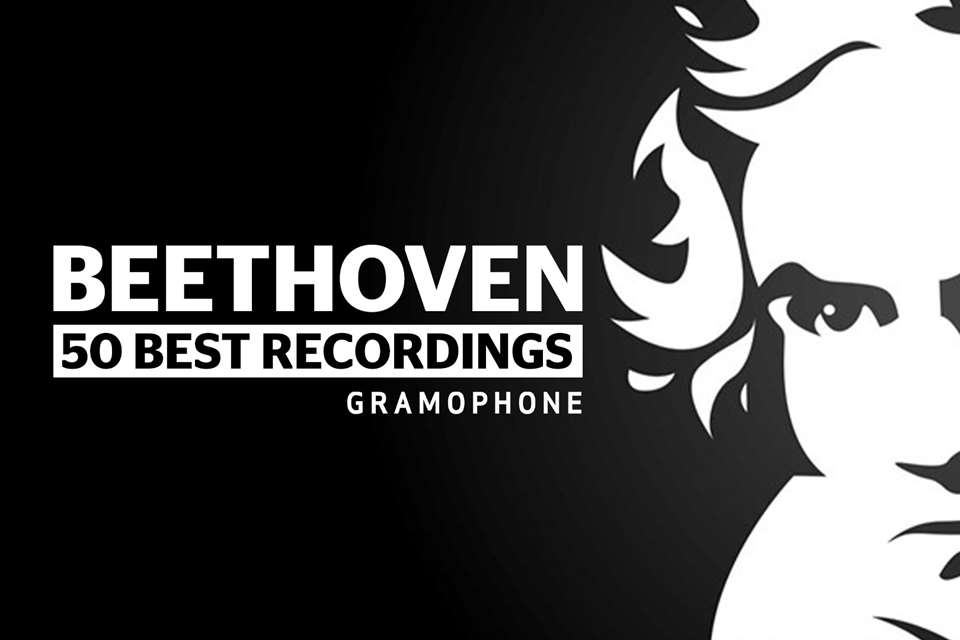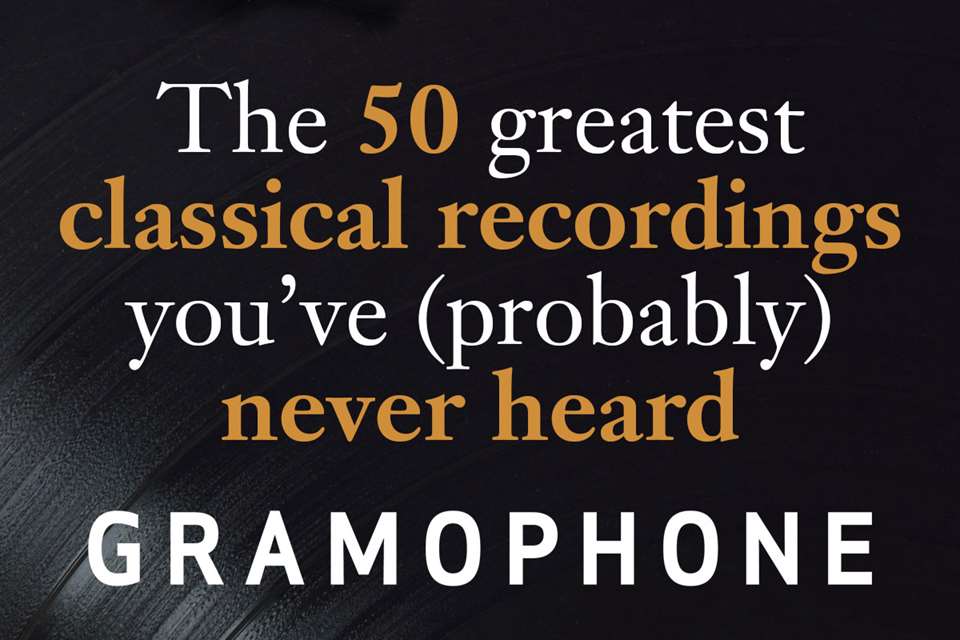The 50 best Mozart recordings
Wednesday, November 1, 2023
50 of the finest Mozart recordings in history, featuring Nikolaus Harnoncourt, Martha Argerich and Claudio Abbado, plus extracts from the original Gramophone reviews
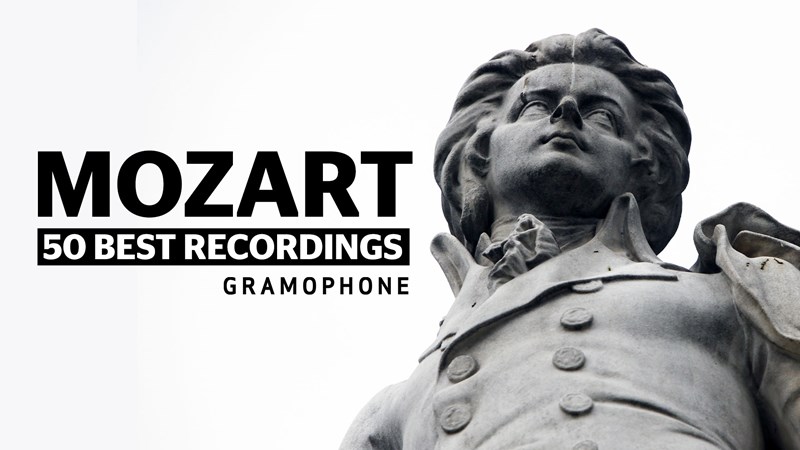
Following the overwhelming popularity of our lists of the 50 greatest Beethoven, Bach, Chopin and Handel recordings, we have now gathered 50 of the finest recordings of Mozart's music – Gramophone Award-winning albums, Recordings of the Month and Editor's Choice discs, from legendary performers like Elisabeth Schwarzkopf and Benjamin Britten to modern masters like John Butt and Alina Ibragimova. The list is organised by genre, beginning with orchestral works, then moving though chamber, instrumental, vocal and opera.
● The 50 best Ludwig van Beethoven recordings
● The 50 best Johann Sebastian Bach recordings
● The 50 best Johannes Brahms albums
Clarinet Concerto. Oboe Concerto. Flute and Harp Concerto
Wolfgang Meyer cl Hans-Peter Westermann ob Robert Wolf fl Naoko Yoshino hp Concentus Musicus Wien / Nikolaus Harnoncourt
(Teldec/Warner Classics)
There are happy and shapely performances of all three concertos here, but the particular delight is that of the latest and greatest of them, the Clarinet Concerto, which Wolfgang Meyer plays on a basset clarinet – that is, an instrument with an extension allowing it to add four semitones at the bottom of its compass. This is the instrument for which the work was originally composed, although only a text adapted to the normal clarinet has come down to us. The reconstruction used here, slightly different in some of its detail from others I have heard, works very well, making the familiar text’s rough places plain and logical; and it serves ideally for Meyer, with his rich and oily bottom register... Stanley Sadie
Horn Concertos
Dennis Brain hn Philharmonia Orchestra / Herbert von Karajan
(Warner Classics)
Dennis Brain was the finest Mozartian soloist of his generation. Again and again Karajan matches the graceful line of his solo phrasing (the Romance of No 3 is just one ravishing example), while in the Allegros the crisply articulated, often witty comments from the Philharmonia violins are a joy. The glorious tone and the richly lyrical phrasing of every note from Brain himself is life-enhancing in its radiant warmth. The Rondos aren't just spirited, buoyant, infectious and smiling, although they're all these things, but they have the kind of natural flow that Beecham gave to Mozart...
Concerto for Two Pianos and Orchestra No 10. Flute and Harp Concerto. Horn Concerto No 3
Ulrich Hübner hn Frank Theuns fl Marjan de Haern hp Yoko Kaneko pf Anima Eterna / Jos van Immerseel pf
(Zig-Zag)
Director and fortepianist Jos van Immerseel is a veritable pioneer of period Mozart. Belgian period-instrument orchestra Anima Eterna’s exuberant performances reveal a natural union of pioneering spirit and refreshing musical flavours. The performers show commendable integrity in their approach to using historical instruments: the characteristics and origins of the solo instruments are each enthusiastically described in the booklet-note but the loving care given to detail in this joyful music means this is never in danger of seeming merely a dour academic exercise... David Vickers
Complete Piano Concertos
English Chamber Orchestra / Murray Perahia pf
(Sony Classical)
Mozart concertos from the keyboard are unbeatable. There's a rightness, an effortlessness, about doing them this way that makes for heightened enjoyment. So many of them seem to gain in vividness when the interplay of pianist and orchestra is realised by musicians listening to each other in the manner of chamber music. Provided the musicians are of the finest quality, of course. We now just take for granted that the members of the English Chamber Orchestra will match the sensibility of the soloist. They are on top form here, as is Perahia, and the finesse of detail is breathtaking...
Piano Concerto No 22
Alfred Brendel pf Academy of St Martin in the Fields / Neville Marriner
(Philips)
Brendel's first recording of Mozart's expansive and luxuriantly scored Piano Concerto in E flat , K482 appeared 14 years ago (8/69), and it is fascinating to compare it with this new one. Both are notable for their sense of style and their clean but always sensitive and musical articulation in runs, and both show a readiness to embellish Mozart's oflen sketchy melodic line: indeed, Brendel's elaboration of the solo part in the lovely Andantino cantabile episode in the final Rondo might almost be considered overdone, tasteful though it is. But the new performance has, as one would expect, a maturity and authority not to be found in the earlier one; the cadenzas (by Brendel himself - Mozart's own were probably never written down, and have certainly not survived) are appropriate and reasonably succinct; and Brendel is less eager to join in the orchestral tutti, a practice which, though historically justifiable, makes musical nonsense when the solo instrument is a modern grand. In addition, the new recording, technically first-rate, has the benefit of exemplary accompaniment by the Academy of St Martin in the Fields under the unerring guidance of Neville Marriner. For anyone wanting a recording of K482 as near perfection as one is likely to get, this new issue is the obvious answer... Robin Golding
Piano Concertos Nos 18 & 22
Northern Sinfonia / Imogen Cooper pf
(Avie)
Imogen Cooper’s two previous Mozart concerto releases with the Northern Sinfonia and Bradley Creswick (12/06 and 8/08) have both been roundly praised and no one who enjoyed them is likely to be disappointed by this latest instalment. Indeed, the qualities that make Cooper quite simply one of the finest pianists this country has produced make her perfect for Mozart duty. Clear but velvety ringing tone, perfect voicing of chords, unsleeping alertness to the necessary subtleties of rubato and line, and above all an ability to realise this music’s intimate poetry that can make you catch your breath, make these performances the kind that any musician should listen to and learn from... Lindsay Kemp
Piano Concerto No 27. Concerto for Two Pianos and Orchestra, K365
Emil Gilels, Elena Gilels pfs Vienna Philharmonic Orchestra / Karl Böhm
(DG)
This is the most beautiful of Mozart playing, his last piano concerto given here by Emil Gilels with total clarity. This is a classic performance, memorably accompanied by the VPO and Böhm. Suffice it to say that Gilels sees everything and exaggerates nothing, that the performance has an Olympian authority and serenity, and that the Larghetto is one of the glories of the gramophone. He's joined by his daughter Elena in the Double Piano Concerto in E flat, and their physical relationship is mirrored in the quality, and the mutual understanding of the playing: both works receive marvellous interpretations.
We think Emil plays first, Elena second, but could be quite wrong. The VPO under Karl Böhm is at its best; and so is the quality of recording, with a good stereo separation of the two solo parts, highly desirable in this work. Stephen Plaistow (November 1974)
Mozart ‘Momentum 1785’
Mahler Chamber Orchestra / Leif Ove Andsnes pf
(Sony Classical)
How inspiring that something so enriching should have come out of lockdown, for the three concertos and the Masonic Funeral Music were all recorded in November by a socially distanced Mahler CO, with the other works set down just prior to lockdown in February last year. Socially distanced they may have been but the camaraderie that was so evident in their groundbreaking Beethoven cycle with Leif Ove Andsnes is, if anything, even more apparent here. The year 1785 was, even by Mozart’s standards, an annus mirabilis, as this double album abundantly demonstrates. But what we also gain from hearing these pieces in this context is an appreciation of the interconnections between them, and that’s certainly brought alive in every performance.... Harriet Smith
Piano Concertos Nos 20 & 25
Martha Argerich pf Orchestra Mozart / Claudio Abbado
(DG)
Both Argerich and Abbado have returned to Mozart late in their careers: she revisiting the piano duets and a handful of concertos; he forming the hand-picked and youthful Orchestra Mozart specifically for the purpose. Not uncharacteristically for her, the present concertos are both works she has recorded before – the D minor in 1998 (Teldec/Elatus, 6/99), the C major in 1978 (EMI, 4/00) and again as recently as 2012, during that year’s Progetto Martha Argerich at Lugano (EMI, 8/13). Of that last recording, Caroline Gill wrote that it was ‘musically and technically equal to anything she has recorded in the studio’; but here again she surpasses herself. The backing of the exquisitely refined Orchestra Mozart grants full rein to her personal brand of expressivity. Every note matters, both individually and as part of a phrase, and once again her microscopic alterations of touch make even the most mundane run of semiquavers dance and sing, imparting something undefinable and treasurable to her performances here... David Threasher
Piano Concertos Nos 25 & 27
Chamber Orchestra of Europe / Piotr Anderszewski pf
(Warner Classics)
Anderszewski habitually pairs a lyrical work with a more dramatic one: the ubiquitous C major, once indelibly associated with a Swedish film, versus the clarinet-imbued Sturm und Drang C minor, followed four years later by the serene G major, No 17, set against the agitated D minor, No 20 (5/06). Here it is the very last concerto – often described as ‘autumnal’ or ‘valedictory’, given its proximity to Mozart’s death (although it may have been started up to three years earlier) – prefaced by the triumphant C major work whose chief motif seems almost to quote the Marseillaise. These have often been thought to signal a departure from the quasi-operatic-ensemble construction of the run of concertos from the mid-1780s, moving towards a more discursive unfolding in K503 and a more simply songlike one in K595. Nevertheless, the wonderful playing of the Chamber Orchestra of Europe shows just how fully the earlier work, especially, is dominated by woodwind conversation and that it can’t be too distantly related to the sound world of Figaro’s ‘Non più andrai’... David Threasher
Violin Concertos
Giuliano Carmignola vn Mozart Orchestra / Claudio Abbado
(Archiv)
Virtuoso “violinism” and energising direction notwithstanding, neither Giuliano Carmignola nor Claudio Abbado seems inspired by the B flat Concerto, K207. Nor does slick dispatch do much for the first movement of the D major, K211; but this is not the shape of things to come. Carmignola steps away from neutrality in the succeeding Andante. The music breathes a life of its own as he ardently inflects its phrases to shape the tension and relaxation of his line which – as elsewhere – he also embellishes. And pauses are decorated with lead-ins. Here is personal involvement that from now on is present in full flower... Nalen Anthoni
Violin Concertos
Isabelle Faust vn Il Giardino Armonico / Giovanni Antonini
(Harmonia Mundi)
The world is not short of recordings of this music and, in true Gramophone fashion, it must be acknowledged that most listeners will have their favourites from the innumerable classic discs that have appeared over the decades. However, for period instruments, period sensibility and state-of-the-art engineering, you may find yourself hard-pressed to better this thought-provoking and eminently enjoyable cycle... David Threasher
Divertimenti
Scottish Chamber Orchestra Wind Soloists
(Linn Records)
Mozart informed his father that he had composed the Serenade K375 ‘rather carefully’ to impress Herr von Strack, a Viennese nobleman sporting the splendid title of ‘Gentleman of the Emperor’s Bed Chamber’. Whether in its original Sextet incarnation, performed here, or its later Octet version, this is music that both celebrates and, as Mozart surely knew, far transcends the tradition of al fresco Harmoniemusik. If you know the more familiar Octet version, you might regret the loss of the oboes’ pungent dissonances near the opening, or of the oboe-clarinet dialogues in the Adagio. But the SCO soloists quickly allay any sense of deprivation. Like all the best ensembles in this music, they strike a nice balance between chamber-musical refinement and rustic earthiness. Natural horns lend a welcome abrasiveness to the tuttis; and the instrument’s variegated colours give added piquancy to the horn tune that sails in out of the blue near the end of the first movement. Clarinets can be dulcet, as in the tenderly phrased Adagio, yet are not afraid to rasp and bite, to specially vivid effect in the sprightly second Minuet. Tempi are aptly chosen (the opening Allegro properly maestoso), and accompanying figuration lives and breathes, not least in the Adagio, where the horns inject delightful touches of jauntiness into the poetic reverie... Richard Wigmore
Serenades
Netherlands Chamber Orchestra / Nikolitch
(Pentatone)
The Haffner, a wedding serenade for the marriage of Elizabeth Haffner in July 1776, was an outdoor summer piece, which was not good for the band, whose members were expected to move around. Thus there are no timpani; and certainly no cellos, because there were aristocratic guests (the bride’s father had been burgomaster of Salzburg), so lowly musicians couldn’t sit while they stood. When Mozart later shortened this eight-movement work to a five-movement “symphony”, he enhanced the orchestration with cellos and drums.
Gordan Nikolitch goes further. He incorporates these instruments into the original format (as did Nikolaus Harnoncourt on a scrawny-sounding early CD), thus turning the Serenade into a fuller work. Harnoncourt also added timpani to the K249 March. Nikolitch doesn’t. This work has a stately expansiveness that only switches to a militaristic snap in the first movement of the Serenade, percussion now lending point both to a regal Allegro maestoso and, leading from it, a fiery alla breve Allegro molto. In the following Andante, the first of three “violin concerto” movements, Nikolitch shows that he is as superlative a violin soloist as he is a conductor, as unerring in his understanding of lyrical eloquence as he is of dramatic timing. He never puts a foot wrong. Neither does Pentatone’s production, which keeps the perspectives steady (for example, the violin is properly balanced with the ensemble and not pulled forward for the cadenzas). The range, transparency and tonal veracity of the recording offer a total vindication of SACD. This is a tremendous disc... Nalen Anthoni
Symphonies Nos 18-24, 26, 27, 50 & K135
Academy of Ancient Music / Christopher Hogwood
(Decca)
It will not be to everyone's taste. To put it over-simply: the traditional way of playing Mozart, on a modern symphony orchestra, and indeed even on a modern chamber orchestra, has been to emphasize two things: the line of the music (usually of course the first violin part), and the texture as a totality. Here the effect, and presumably to some degree the intention, is that the music is presented more in terms of a series of lines, or as a texture that needs less to be blended or homogenized than to be evaluated afresh in its internal balance at any and every moment. It makes the music more complex and more interesting, certainly more challenging, to listen to. The listener may find that the familiar broad sweep of some of these movements is lacking, but he will generally find the compensations more than sufficient. Better still if he can avoid thinking of it that way, and try, rather, to envisage this as the kind of sound that Mozart (as far as anyone can tell) had in mind, and to recognize that the music was written in the way it was because this is what Mozart expected... Stanley Sadie (December 1979)
Symphonies Nos 25 & 29
English Chamber Orchestra / Benjamin Britten
(Decca)
Britten secures marvellous performances of these two symphonies by the 18-year-old Mozart. In the 'little' G minor he hrings out by the choice of moderate tempi and legato phrasing (listen to how lovingly he shapes the second subject of the finale, for example), the uneasy tension implicit in the two outer movements, without making the music sound aggressive or nervous. The Andante, warmly coloured by the two bassoons, moves at a gentle walking pace, yet never drags; the Minuet is strong and purposeful, with most distinguished wind playing in the Trio. The A major Symphony is no less well done, with muscular yet affectionate playing in the first and last movements, a glowing Andante, and a springy Minuet, with beautifully crisp dotted rhythms: I do not remember having enjoyed listening to it so much for a very long time.
The mellowness and sensitivity of Britten's performances are matched by the warmth of the Decca recording, which ably reproduces the Snape sound. Neville Marriner's highly accomplished, brisker, and - to be frank - less penetrating performances of the same two symphonies are matched by a brighter but shallower recording from Argo: in a word, the two interpretations and recordings are absolutely different. To my mind, the Britten disc is a revelation... Robin Golding (June 1978)
Symphonies Nos 38-41
Scottish Chamber Orchestra / Sir Charles Mackerras
(Linn Records)
There is no need to argue the credentials of Sir Charles Mackerras as a Mozart interpreter, so let us just say that this double CD of the composer’s last four symphonies contains no surprises – it is every bit as good as you would expect. Like many modern-instrument performances these days it shows the period-orchestra influence in its lean sound, agile dynamic contrasts, sparing string vibrato, rasping brass, sharp-edged timpani and prominent woodwind, though given Mackerras’s long revisionist track-record it seems an insult to suggest that he would not have arrived at such a sound of his own accord. And in any case his handling of it – joyously supported by the playing of the Scottish Chamber Orchestra – is supremely skilled; rarely will you hear such well judged orchestral balance, such effective marrying of textural transparency and substance. The Jupiter in particular has a wonderful bright grandeur, yet reveals details in the brilliant contrapuntal kaleidoscope of the finale that too often go unheard... Lindsay Kemp
String Quintets K515 & 516
Ébène Quartet with Antoine Tamestit va
Erato
These players prefer enquiry and renewal to the default settings of effortless euphoniousness in K515 and one-dimensional melancholy in K516. Inhabiting an ecosystem in which the application of vibrato (or its absence) is determined by emotional necessity, every voice is at once perfectly matched yet rich in possibility, almost as if hinting at harmonic roads not taken. No one fills in or merely chugs along. And we’ve a front-row seat from which to savour the variety of articulation and the extended dynamic range. Intakes of breath are sometimes audible, never disruptive. The overall sonority is luminous, intonation beyond reproach.
String Quartets Nos 20-22
Quatuor Mosaïques
(Naive)
The Mosaïques’ recording of the 10 mature Mozart Quartets is completed by this release‚ so it’s time to salute an outstanding achievement. Apart from the clear‚ rich sound of the period instruments and the precise‚ beautiful tuning‚ what impresses about this Mozart playing is the care for detail‚ the way each phrase is shaped so as to fit perfectly into context while having its own expressive nuances brought out clearly. This often leads the quartet to use more rubato‚ to make more noticeable breathing spaces between sentences than many other groups do.
In the first movements of both these quartets‚ for instance‚ the Mosaïques adopt a very similar tempo and tone to the Quartetto Italiano‚ but the Italians aren’t so rhythmically flexible; though the music is beautifully shaped‚ we move continually onwards at a steady pace‚ drawing attention to the overall effect. But with the Mosaïques we’re made to listen to and appreciate the significance of each detail as it unfolds. With this approach there might be a danger of sounding contrived‚ but even when adopting a mannered style‚ as in the Minuet of K499‚ the Mosaïques retain a strong physical connection with the music’s natural pulse – by comparison the Quartetto Italiano here seem a trifle heavy and humourless. The slow movements of both quartets are taken at a flowing pace‚ making possible an unusual degree of expressive flexibility‚ achieved without any sense of hurry. All repeats are made‚ including those on the Minuet’s da capo in K499. This means that the expansive K499 lasts more than 36 minutes. The longer the better‚ as far as I’m concerned. Duncan Druce (October 2001)
String Quartets Nos 14, 16 & 19
Casals Quartet
(Harmonia Mundi)
Mozart’s 1785 dedication of six quartets to Haydn reads: ‘May it therefore please you to receive them kindly and to be their Father, Guide and Friend.’ Respect is clear; but when the 96-bar Andante con moto of K428 offers a strong reminder of the 96-bar Affettuoso e sostenuto of Haydn’s Op 20 No 1, also in A flat and in compound time, affection becomes implicit too. Cuarteto Casals don’t stint on tender warmth, ensemble expertly balanced and chorale-like in sonority. Yet clarity remains uppermost. An un coagulated sound is an ever-present aspect of this ensemble’s style. So is an emotional and intellectual dimension, probed through trenchant attack, elastic lines, ductile phrases and a wide dynamic range... Nalen Anthoni
String Quartets Nos 15 & 19. Divertimento, K138
Quatuor Ebène
(Erato)
A delicately breathy sotto voce at the beginning of K421 presages promise. Often this opening isn’t inward enough and sometimes the tempo is too fast for Allegro moderato. The Quatour Ebène trust Mozart’s directive; and Otto Jahn’s belief that this dusky movement is also an ‘affecting expression of melancholy’ makes sense at this pace. Their modes of expression play a crucial role too. These musicians bend and straighten, relax and tighten with micro-dynamic changes. All are intuitively sensed and go beyond literal obedience to the written markings. Yet pulse is steady and nothing is piecemeal or dislocated. Individual character comes first though. The Minuet is very forcefully played. Constanze, who was having their first baby, thought some passages suggested birth pangs. But the Trio, in the tonic major, is slower, solicitous, with rubatos critically timed. Interpretation is always carefully thought through and heartfelt. Turn to K465 and hear the Adagio introduction paced to give the ‘false relations’ their due, the contrasts in the main Allegro properly stressed and the element of cantabile in the slow movement most lyrically expressed. Nalen Anthoni
Violin Sonatas Nos 5, 9, 15, 18, 21, 27, 33
Alina Ibragimova vn Cédric Tiberghien pf
(Hyperion)
In the G major Sonata, K379, rapidly composed for a Viennese concert mounted by Archbishop Colloredo just before Mozart jumped ship, Tiberghien and Ibragimova are aptly spacious in the rhapsodic introductory Adagio (how eloquently Tiberghien makes the keyboard sing here), and balance grace and fire in the tense G minor Allegro. In the variation finale their basic tempo sounds implausibly jaunty for Mozart’s prescribed Andantino cantabile, though objections fade with Tiberghien’s exquisite voicing of the contrapuntal strands in the first variation. I enjoyed the latest of the sonatas, K481, unreservedly, whether in the players’ exuberant give-and-take in the outer movements or their rapt, innig Adagio, where Ibragimova sustains and shades her dulcet lines like a thoroughbred lyric soprano. Having begun this review in grudging mode, I’ll end in the hope that these delightful, inventive performances presage a complete series of Mozart’s mature violin sonatas, with or without a smattering of childhood works... Richard Wigmore
Violin Sonatas Nos 27, 32 & 35
Christian Tetzlaff vn Lars Vogt pf
(Ondine)
This disc brings together two musicians absolutely at the top of their game and with long experience of working together, as the easy dialogue between them amply demonstrates. High points abound: the way Tetzlaff withdraws his sound to a whisper in the long, sinewy lines of the Andante of K454; the minor-key passage in the same movement, a tragedy no less profound for being fleeting. At the other end of the emotional spectrum is the scintillating interaction of the two in the Presto of K526. This sonata, one of Mozart’s remarkable A major creations, came in the wake of personal tragedy, following the death not only of his father but also his friend, the gamba player and composer Carl Friedrich Abel, to whose memory the work is dedicated. It’s a creature of great changeability, attaining an almost hymnic intensity in the slow movement. That is especially evident in the visionary playing of Mark Steinberg with Mitsuko Uchida (a recording that should be in every home, to my mind, disappointing only for the fact that there has been no follow-up), where every yearning key-change is luminously coloured. The tragedy is perhaps more restrained in the new version, Tetzlaff’s tone warmer a degree or two than Steinberg’s, though the way he uses vibrato for expressive effect is compelling... Harriet Smith
Piano Quartets
Paul Lewis pf Leopold String Trio
(Hyperion)
There have been several excellent recordings recently of these two works, mostly on period instruments. Here’s another, on modern instruments, and with performances quite out of the ordinary. These are unusually expansive works, their first movements each close on 15 minutes’ music, prolific in their thematic matter and richly developed. They demand playing that shows a grasp of their scale, playing that makes plain to the listener the shape, the functional character of the large spans of the music.
Paul Lewis and the Leopold String Trio excel in this, with their feeling for its structure and its tension: I am thinking primarily of the first movement of the G minor, and especially of its great climax at the end of the development section, which is delivered with a power and a sense of its logic that are compelling. It is in fact clear from the opening that this is a performance to reckon with, exemplified by its carefully measured tempo, its poise and its subtle handling of the balance between strings and piano. There is a great deal of variety from Lewis in matters of touch and articulation, and much refinement of detail: the shades of meaning in the shifts between major and minor, and in the often chromatic harmony, do not escape him and his colleagues. The Andante is unhurried, allowing plenty of time for expressive detail; and the darker colours within the finale, for all its G major good cheer, are there too... Stanley Sadie
Sonata for Two Pianos, K448
Radu Lupu, Murray Perahia pfs
(Sony)
How lucky we are that the two greatest pianists of their generation, Murray Perahia and Radu Lupu, are firm friends and that they have collaborated in recording two pieces that are arguably the most successful examples of their respective genres (the Schubert is for piano duet; the Mozart for two pianos). Whether it is in the perfectly crafted busy activity of the Allegro con spirito first movement of the Mozart or the introspective and soulful depth of the Schubert, the players find a unanimity of vision. One is not so much conscious of dialogue-like interplay, but more of them blending to play as one instrument.
The fine CBS recording has entirely captured the subtle inflections of detail, especially in the artists' irreproachable balance. Taken from a live performance at The Maltings, matters of ensemble, which usually defeat the Mozart Sonata, are judged to perfection. After the double bar of the slow movement Lupu and Perahia become lost in each other's thoughts and the effect is overwhelmingly beautiful... James Methuen-Campbell
Keyboard Music, Vols 5, 6 & 7
Kristian Bezuidenhout fp
(Harmonia Mundi)
‘When Mozart played a simple scale,’ wrote Wanda Landowska, quoting the composer’s contemporaries, ‘it became transformed into a cavatina.’ That sums up the Bezuidenhout difference. His typical Mozartian attributes include firm command of structure, great instincts for sympathetic tempi and a technique refined enough to get at the tiniest details – in contrast to Paul Badura-Skoda’s more forceful but generalised fortepiano sonorities (Gramola). More distinctively, Bezuidenhout’s elastic tempi give him room to probe for meaning but also allow panache that’s so much a part of Mozart’s buoyant temperament and prompts some delightfully elongated final cadences. Not only does one hear the notes with more transparency than on a modern instrument but one also gets a stronger sense of Mozart’s larger world. Bezuidenhout’s stealth weapon, though, may be the unequal temperament of his copy of an 1805 Anton Walter instrument. The popular notion that equal temperament reigned exclusively after JS Bach just isn’t true. Experiments with alternative tuning – I’m thinking of Peter Serkin playing late Beethoven – can be colouristic revelations, which is also true of Bezuidenhout. So if you can only afford one volume of this series, which would it be? I refuse to say. Hear them all... David Patrick-Stearns
Piano Sonatas Nos 7, 11, 15 & 18
Christian Blackshaw pf
(Wigmore Hall Live)
Christian Blackshaw’s Mozart is a known quantity, of course, and I doubt whether any of the superlatives below hasn’t been applied to the previous three volumes in his Wigmore Hall Live series. But permit me to join the chorus of acclaim for his elegance of phrasing, limpid tone quality (captured in a demonstration-quality recording), tastefulness of nuance and ornamentation, and imaginative response to harmony and character. Every tiniest detail here is thought through, and only the most painstaking forensics would find the slightest fault in the fingerwork (a very few bass notes don’t quite speak, and even more rarely an ornament is less than silky smooth, if you want to know). Yet nothing is fetishised. Perfection – or something very close to it – is in the service of freedom... David Fanning
Piano Sonatas Nos 1–18
Mitsuko Uchida pf
(Philips)
By common consent, Mitsuko Uchida is among the leading Mozart pianists of today, and her recorded series of the piano sonatas won critical acclaim as it appeared and finally Gramophone Awards in 1989 and 1991. Here are all the sonatas, plus the Fantasia in C minor, K475, which is in some ways a companion piece to the sonata in the same key, K457. This is unfailingly clean, crisp and elegant playing, that avoids anything like a romanticised view of the early sonatas such as the delightfully fresh G major, K283. On the other hand, Uchida responds with the necessary passion to the forceful, not to say angst-ridden, A minor Sonata, K310. Indeed, her complete series is a remarkably fine achievement, comparable with her account of the piano concertos. The recordings were produced in the Henry Wood Hall in London and offer excellent piano sound; thus an unqualified recommendation is in order for one of the most valuable volumes in Philips's Complete Mozart Edition. Don't be put off by critics who suggest that these sonatas are less interesting than some other Mozart compositions, for they're fine pieces written for an instrument that he himself played and loved.
Complete Piano Sonatas
Daniel-Ben Pienaar
(Avie)
Daniel-Ben Pienaar couldn’t have begun better, not by playing but by saying, “It is inescapable that a performance practice for these works that engages the instrument’s full expressive potential needs to look beyond easy categories of ‘authentic’, or ‘modern’ or ‘historically informed’”. Quite – but that’s not all, so do read his booklet-note first. One factor strikes immediately: there is not a whiff of bygone reverential, even obsequious attitudes to Mozart that still cast faint shadows among some pianists. Pienaar is therefore “modern” in his discernment of the music. But – how about this for a 19th-century throwback? – Pienaar de-synchronises his hands, though selectively so. Effects are clear in, for example, the Fantasia, K475. The fractional hiatus between left and right underpins the harmony in the first and third bars; and a similar hiatus in the D major section (2'25") lends added expression to its contrasting calmness. The staggered articulation is no mere anachronism. It becomes a subtle aspect of a range of expression Pienaar uses to penetrate music “very rich in activity, rich in personality and topoi”. Point and purpose explained...
Piano Sonatas Nos 8 & 15
Richard Goode pf
(Nonesuch)
There’s nothing more demanding of mind and finger, heart and hand, than a Mozart programme such as this, which includes two of the greatest sonatas and the A minor Rondo. Absolutely no margin for error or insufficiency, nor indeed for anything at all approximate or generalised. It’s given to very few to play Mozart as well as Richard Goode, who seems to me to pitch the rhetoric just right and sustain an ideal balance of strength and refinement. Pitching rhetoric so that one is constantly persuaded isn’t a question of getting it in the right ball-park but of defining character with absolute precision and making eloquence speak as well as sing. With Goode, the music couldn’t be any other way, not at this moment. The smallest units have been thought about, judged in relation to before-and-after and the long term, and then released into the air, beyond the confines of the instrument... Stephen Plaistow
Mass in C minor
Carolyn Sampson (soprano), Olivia Vermeulen (alto), Makoto Sakurada (tenor), Christian Immler (bass) Bach Collegium Japan / Masaaki Suzuki
(BIS)
Period-instrument C minor Masses get better and better. The bar was set in the mid 1980s by Gardiner and Hogwood, then raised in the new millennium by the likes of McCreesh, Krivine and Langrée. This new recording from Japan, which joins Suzuki’s scholarly and startling Requiem, is fully worthy to join them. Reviewing the Requiem (1/15), I was disappointed that the acoustic and engineering blurred the inner voices, obliterating Mozart’s (or Süssmayr’s, Eybler’s or Suzuki Jnr’s) counterpoint. Here that problem is largely avoided in a similarly grand acoustic: that, and the fact that the C minor Mass is a far more vocally orientated piece than the Requiem.
The choir are well drilled and the two female soloists are matched as well as any on disc (see my Collection on the work, 6/13). Carolyn Sampson takes the bulk of the soprano solos (the ‘Laudamus’ is taken by the second soprano, Olivia Vermeulen, as is traditional) and does so with the lithe coloratura, rich, silky tone and innate identification with this music familiar from her sacred Mozart collection with The King’s Consort (Hyperion, 5/06), and intertwines memorably with Olivia Vermeulen in the duet and trio of the Gloria. Suzuki is no speed merchant (a full minute slower than Langrée in the Kyrie, for example), and maintains the through line in more strenuous movements such as the ‘Qui tollis’ and the ‘Cum Sancto Spiritu’ fugue that closes the Gloria. He takes his time especially in the ‘Et incarnatus est’, its beautiful pastoral scene spun out mesmerisingly by Sampson... David Threasher
Requiem
Joanne Lunn, Rowan Hellier, Thomas Hobbs and Matthew Brook (soloists) Dunedin Consort / John Butt
(Linn)
Purely on grounds of performance alone, this is one of the finest Mozart Requiems of recent years. John Butt brings to Mozart the microscopic care and musicological acumen that have made his Bach and Handel recordings so thought-provoking and satisfying.
As with all of Butt’s recordings, however, this Mozart Requiem is something of an event. The occasion is the publication of a new edition – by David Black, a senior research fellow at Homerton College, Cambridge – of the ‘traditional’ completion of this tantalisingly unfinished work, of which this is the first recording. Süssmayr’s much-maligned filling-in of the Requiem torso has lately enjoyed a resurgence in its acceptance by the scholarly community – not that it has ever been supplanted in the hearts and repertoires of choral societies and music lovers around the world. The vogue for stripped-back and reimagined modern completions is on the wane and Süssmayr’s attempt, for all its perceived inconsistencies and inaccuracies, is once again in favour in the crucible of musicological criticism. After all, as Black points out in the preface to his score, ‘Whatever the shortcomings of Süssmayr’s completion, it is the only document that may transmit otherwise lost directions or written material from Mozart’... David Threasher
Requiem
Margaret Price, Trudeliese Schmidt, Francisco Araiza, Theo Adam; Staatskapelle Dresden / Peter Schreier
(Philips)
The fact that he knows the score inside out and that he loves the music passionately, shines through the whole performance: I can think of few, if any, live or on records, that have struck me as being so totally committed to the spirit of this great work, or have made it sound like a finished masterpiece—despite the fact that Mozart did not live long enough to write the score out in full, and that it was completed by his pupil Sussmayr. He is, as every singer should be, especially sensitive to the words, as well as to the music: one instance is his quite extraordinarily perceptive handling of the Recordare, in which the four soloists for once sing as if they really understand every word and inflection of the Latin text. The solo quartet is unusually fine and well balanced, and if I say that Margaret Price sings the prominent soprano part better than I can ever remember having heard it sung, this is in no way meant to disparage the equally beautiful singing of Trudeliese Schmidt, Francisco Araiza and Theo Adam. The Leipzig Radio Chorus and the Dresden State Orchestra provide splendid support and Philips's digital recording is uncannily vivid... Robin Golding
Così fan tutte
Sols incl Elizabeth Schwarzkopf, Christa Ludwig, Giuseppe Taddei; Philharmonia Orchestra / Karl Böhm
(Warner Classics)
Così fan tutte is the most balanced and probing of all Mozart’s operas, formally faultless, musically inspired from start to finish, emotionally a matter of endless fascination and, in the second act, profoundly moving. It has been very lucky on disc, and besides this delightful set there have been several other memorable recordings. However, Karl Böhm’s cast could hardly be bettered, even in one’s dreams. The two sisters are gloriously sung – Schwarzkopf and Ludwig bring their immeasurable talents as Lieder singers to this sparkling score and overlay them with a rare comic touch. Add to that the stylish singing of Alfredo Kraus and Giuseppe Taddei and the central quartet is unimpeachable. Walter Berry’s Don Alfonso is characterful and Hanny Steffek is quite superb as Despina. The pacing of this endlessly intriguing work is measured with immaculate judgement. The emotional control of the characterisation is masterly and Böhm’s totally idiomatic response to the music is arguably without peer...
Così fan tutte
Sols incl Miah Persson, Anke Vondung, Ainhoa Garmendia, Topi Lehtipuu; Glyndebourne Chorus; Orchestra of the Age of Enlightenment / Iván Fischer
(Opus Arte DVD/Blu-ray)
Since 1934 when Glyndebourne revived this then-neglected work and began its run of success it has presented a succession of exemplary stagings all within the parameters of da Ponte’s libretto. When this, the latest, was produced it was universally hailed: as faithful a representation of the equivocal comedy as one could wish. That’s confirmed by this DVD.
Both Despina and Alfonso are played traditionally and with notable brio by Garmendia and Rivenq. The delightful Persson and Vondung make a wholly believable and vocally attractive Fiordiligi and Dorabella, and deliver their music in ideal Mozartian tone and style. Similarly Lehtipuu is a charming and wide-eyed Ferrando and Pisaroni a warm-voiced and personal Guglielmo. They both woo with seductive charm.
As reviews at the time reported, Fischer conducts with an unassumingly correct sense of timing and has the inestimable advantage of the OAE’s period instruments. Alan Blyth
Don Giovanni
Sols incl Rodney Gilfry, Luba Orgonasova, Charlotte Margiono, Christoph Prégardien, Ildebrando d’Arcangelo; Monteverdi Choir; English Baroque Soloists / Sir John Eliot Gardiner
(Archiv Produktion)
Gardiner’s set has a great deal to commend it. The recitative is sung with exemplary care over pacing so that it sounds as it should, like heightened and vivid conversation, often to electrifying effect. Ensembles, the Act 1 quartet particularly, are also treated conversationally, as if one were overhearing four people giving their opinions on a situation in the street. The orchestra, perfectly balanced with the singers in a very immediate acoustic, supports them, as it were ‘sings’ with them. That contrasts with, and complements, Gardiner’s expected ability to empathise with the demonic aspects of the score, as in Giovanni’s drinking song and the final moments of Act 1, which fairly bristle with rhythmic energy without ever becoming rushed. The arrival of the statue at Giovanni’s dinner-table is tremendous, the period trombones and timpani achieving an appropriately brusque, fearsome attack. Throughout this scene, Gardiner’s penchant for sharp accents is wholly appropriate; elsewhere he’s sometimes rather too insistent. As a whole, tempos not only seem right on their own account but also, all-importantly, carry conviction in relation to each other. Where so many conductors today are given to rushing ‘Mi tradì’, Gardiner prefers a more meditative approach, which allows his soft-grained Elvira to make the most of the aria’s expressive possibilities.
Rodney Gilfry’s Giovanni is lithe, ebullient, keen to exert his sexual prowess; an obvious charmer, at times surprisingly tender yet with the iron will only just below the surface. Suave and appealing, delivered in a real baritone timbre, his Giovanni is as accomplished as any on disc. Ildebrando d’Arcangelo was the discovery of these performances: this young bass is a lively foil to his master and on his own a real showman, as ‘Madamina’ indicates, a number all the better for a brisk speed. Orgonasova once more reveals herself a paragon as regards steady tone and deft technique – there’s no need here to slow down for the coloratura at the end of ‘Non mi dir’ – and she brings to her recounting of the attempted seduction a real feeling of immediacy. As Anna, Margiono sometimes sounds a shade stretched technically, but consoles us with the luminous, inward quality of her voice and her reading of the role, something innate that can’t be learnt.
Nobody in their right senses is ever going to suggest that there’s one, ideal version of Don Giovanni; the work has far too many facets for that, but for sheer theatrical élan complemented by the live recording, Gardiner is among the best, particularly given a recording that’s wonderfully truthful and lifelike. Alan Blyth
Don Giovanni
Sols incl Waechter, Sutherland, Schwarzkopf; Philharmonia Orchestra / Carlo Maria Giulini
(Warner Classics)
At last. The 1959 Giulini Don Giovanni has been digitally remastered and made available on CD. Philip Hope-Wallace, reviewing the original release, thought that it was worth a year at a foreign university. Well, I don't know if I'd go that far; but it is extremely difficult to choose between this and the Davis performance on Philips for non-stop momentum born of deep understanding of the musical expression of character and dramatic motivation.
There is no doubt that the orchestral playing here is unsurpassed. From the depth and precision of the opening chords to the fugitive spirit of dance which no one else quite captures, the Philharmonia under Giulini become a second cast on their own. So often the tiniest detail – the weight of a chord, the length of a silence, the linking curve of a phrase, the parting of the inner voices of the strings – stage-manages the drama more shrewdly than a good many theatre directors ever do. That having been said, I find Davis's pacing marginally more exciting. Giulini does, one feels, occasionally hold back to allow a voice its moment of glory; and the Act 1 finale hasn't quite that thrilling inexorability as the dance hurtles from form to chaos... Hilary Finch
Don Giovanni
Sols incl Allen, Verness, Ewing; London Philharmonic Orchestra / Bernard Haitink
(EMI/Warner Classics)
By general consent, the performances of Don Giovanni in Sir Peter Hall's production at Glyndebourne in 1982 were considered profoundly satisfying, and therefore a special achievement in a work so hard to bring off both on stage and on the gramophone. Now that achievement is mostly confirmed in a recording that is definitely the peer of those that have gone before and possibly their superior in several respects. Giovanni is certainly the most recorded of Mozart's operas, so the work must be much in demand among collectors who, like Giovanni in his search for women, seem unsatisfied by the available choice.
They ought to find the new version solving many of their difficulties. In the first place, as with so many recommendable ones of operas these days, it has the best of both worlds: the experience of recent stage performances refined under studio circumstances – including one significant change of cast. Then it has in Haitink as cogent a conductor as any who have gone before. In many respects he recalls the direct, unaffected, judicious conducting of Fritz Busch, one of his predecessors as Glyndebourne's Music Director (Busch's famous 1936 recording is still to be had – EMI, 3/83). He is as much aware as Bohm of the importance of rhythmic impetus and natural flow, also of vital detail – such as the wind gurglings in ''Meta di vuoi''... Alan Blyth
Don Giovanni
Sols incl Finley, Samuil, Royal; Orchestra of the Age of the Enlightenment / Vladimir Jurowski
(Warner Classics DVD)
Jonathan Kent follows up his superb Fairy Queen with a gripping account of what some people consider to be Mozart’s “problem opera”. It is set in 1960, the world of La dolce vita, all scarves and dark glasses; but the location is Franco’s Spain (where the Fellini film was banned until after the monster’s death). In the context of his production Kent rarely puts a foot wrong.
There’s a geniality about his stage presence that makes Gerald Finley more suited, I suspect, to Figaro and Leporello than to the Count and Don Giovanni. But his assumption of Giovanni is completely convincing. He can be a vicious thug – no gentlemanly fencing for him, he smashes the Commendatore’s face with a brick – and of course he can turn on the charm. His most important relationship, as Finley puts it in one of the two bonus features, is with Leporello, each character both irritated by and dependent on the other. Finley’s embarrassed grins, as he tries to convince Donna Anna and Don Ottavio that Donna Elvira is mad, are a joy to behold; and his fear before the confrontation with the Commendatore in the supper scene is palpable. Finley sings as well as he acts, apart from an oddly unhoneyed Serenade.
Kent’s direction of the women is telling. Prim, middle-aged Ottavio doesn’t stand a chance against Anna’s obsession with her father. At the end, the besotted Elvira touches the corpse of Giovanni, who lies in the same position as the murdered Commendatore – a nice touch. But I think that Kent is wrong to have Giovanni humping Zerlina against a wall before her rescue by Elvira, an important feature of the opera surely being Giovanni’s signal failure to seduce anyone at all. Vladimir Jurowski chooses the Vienna version: so out goes “Il mio tesoro”, in comes the duet where Zerlina threatens Leporello and ties him up. The singing is fine and the OAE play like angels. Richard Lawrence (August 2011)
Die Entführung aus dem Serail
Sols incl Schäfer, Petibon, Bostridge; Les Arts Florissants / William Christie
(Erato)
This ebullient, beautifully co-ordinated reading began life in a production at Strasbourg at the end of 1995 when Andrew Clark reported in Opera that ‘rarely have Mozart’s exotic textures sounded so feather-light, or the instrumental obbligatos so naturally in context’. Christie sets ‘brisk but flexible tempos, and builds the ensembles into a fever of musical jubilation’. That is all amply confirmed in this finely balanced, intimate recording. In the Overture and some of the early numbers, Christie is inclined to clip his rhythms with accents almost brusque, but once the Pasha and Konstanze appear on the scene, he settles into an interpretation that evinces the elevated sensibility that informs his Rameau, Handel – and indeed Die Zauberflote – on disc, strong on detail but never at the expense of the whole picture.
But then he has by his side a Konstanze to stop all hearts. Having delivered herself of a fleet, easy ‘Ach, ich liebte’, Schäfer (who wasn’t in the original cast) pierces further than does any other interpreter into the soul of the woman who is both physically and emotionally imprisoned. From the deeply felt, vulnerable recitative leading into ‘Traurigkeit’ she pours out Constanze’s woes in that pure, plaintive, highly individual tone of hers and, above all, offers a wonderfully fresh and inward execution of the text. With Christie going all the way with her, musically speaking, ‘Traurigkeit’ itself is heart-rending in its G minor sorrowing, ‘Martern aller Arten’ the epitome of determined defiance and resolution. Try the final section from ‘Doch du bist entschlossen’ – have you ever heard it sound so resolute, so detailed?
In the great Act 2 Quartet and the last-act duet, where Mozart peers into his musical future, she is just as moving and inspires Bostridge to equal heights of tender inflexion. At first you may, as I did, find Bostridge lightweight for Belmonte. Ears accustomed to Wunderlich (Jochum), Schreier (Bohm) and Heilmann (Hogwood) need to get accustomed to Bostridge’s less refulgent tone, but in the context of this period-instrument performance, with a small band (smaller, I would judge, than Gardiner’s), his silvery voice and Mozartian know-how carry the day, though his voice sometimes sounds disconcertingly similar to the nimble, ingratiating tenor of the Pedrillo, Iain Paton.
Like her mistress in her role, Petibon gives us a Blonde to make us forget just about every other soprano in the part on disc. She plays with and smiles through her opening aria with a delightful freedom of technique and expression, nothing daunted by its tessitura, even adding decorations to the already-demanding vocal line (the whole recording is literally adorned by small embellishments, naturally delivered). She maintains this high standard throughout in a winning performance.
As Osmin, Ewing’s vibrant, individual bass-baritone is attractive on its own account but, as on the other period-instrument performances, one does rather miss a true bass voice in such a low-lying part (listen to Bohm’s Moll to hear what’s missing), and Ewing proves a benevolent, homely Osmin rather than a threatening one. But, like all the other singers and the keenly spoken Pasha of Low, he fits easily into the performance’s overall and likeable concept, so I am not inclined to labour this slight drawback.
Christie includes all the recently rediscovered music, as does Gardiner, but the choice of dialogue is markedly different, with Christie opting for a shorter script than Gardiner; Hogwood includes most of all. Its delivery is easy and idiomatic. As I have suggested, the recording is excellent.
By and large, Christie steers a sensible course between Gardiner’s over-brisk performance and Hogwood’s rather relaxed effort. In the all-important role of Konstanze, Orgonasova for Gardiner is vocally and technically as accomplished as Schafer, but when it comes to delving into the role’s meaning, she is nowhere beside her new rival, who surpasses even Bohm’s exemplary Auger.
Christie is now my recommendation if you want a period-instrument recording, with Bohm still there as a benchmark on modern instruments. At the bargain level Jochum is just back in circulation (but his Konstanze leaves something to be desired) on DG, and at super-bargain don’t overlook the excellent Linz issue on Arte Nova, but just now I am going back to listen to Schäfer, Bostridge et al in that Quartet, Mozart performance on the highest level of achievement. Alan Blyth (March 1999)
Idomeneo
Sols incl von Otter, Rolfe Johnson, McNair; English Baroque Soloists / Sir John Eliot Gardiner
(Archiv)
Unless and until further research proves otherwise, this version will remain the definitive recording of Mozart's early masterpiece for a long time to come. That is not to say I shall make a bonfire of the sets listed above, each of which has special features to commend it, merely that Gardiner—who has written how much he owes to Mackerras and Harnoncourt in finding the right route to interpreting the work—has given us a reading that seems to accord as closely as can at present be discerned with both a performance of Mozart's time (of which he gives ample evidence in his accompanying notes though nothing is conclusively proved) and one that sounds thoroughly authentic in the best sense. Those who attended any of the three live performances from which this set has been made will confirm that they were evenings of thrilling music-drama. On those occasions Gardiner experimented with mixtures of the various plausible arrangements of the existing music. Then at a further concert, he performed alone the fullest version possible of the opera's final scenes, a fascinating experience, though one that in context of a stage performance might tire both singers and audience alike.
Here we have the best of all worlds. In the main recording we have a composite version of the surviving music for Munich 1981. In practice Gardiner's choices seem the right ones. Thus we have the longer, more elaborate ''Fuor del mar'', the shorter of the sacrificial scenes, the briefer of the two brass versions of Neptune's pronouncement and the ballet music. Included are Arbace's second aria, Elettra's ''D'Oreste e d'Aiace'' and Idomeneo's ''Torna la pace''. All were cut by Mozart before the premiere but make sense in the context of a recording. In the appendices (on the end of CD2) are bits of recitative from Act 2, the longer of the sacrificial scenes, the longer of the brass versions of Neptune's pronouncement (plus the setting with wind—marvellous), and the scene in Act 3 for Elettra that replaced her aria. This complete recording (minus only the simpler versions of ''Fuor del mar'' and the shortest version of Neptune's music) offers the intending buyer three, very well-filled discs.
So much for the (quite important) nuts and bolts. All this thoroughness of approach would be of little avail were the performance in any way inadequate, but Gardiner's reading is in almost every respect profoundly satisfying. As he avers, he came to the piece having traversed on disc this work's two great progenitors Jephtha and Iphigenie en Tauride, both operas about parental sacrifice and obviously influential on Idomeneo. Then he brings to the work, as does his orchestra, the experience and knowledge gained through recording the Mozart concertos and late symphonies on period instruments. In matters of phrasing, articulation, melodic shaping, they here benefit from their previous achievement: this is a taut, raw, dramatic reading, yet one that fully allows for tenderness and warmth. You can judge these things as well as anywhere in the March before ''Placido e il mar'', then in that chorus itself, the one clean in texture, brisk in articulation, the other suave and appealing in its 6/8 rhythm. You can also hear there the advantage of the right-sized band and choir. Listen, too, to the control of dynamics in the great Act 3 Quartet.
Throughout Gardiner and his team recognize what he indicates in another note, the fact that Mozart conceived the work as through-written without any breaks in the piece's forward movement. As at the Queen Elizabeth Hall this creates the correct sense of internal tensions within external formality. Once or twice in Act 1 I felt that Gardiner's penchant for fierce accentuation was getting the better of him and calling attention to the podium rather than to the music, but the impression soon passed and one listened to the new revelations of the reading without let or hindrance. Tempos are admirably judged.
Although some roles have been as well or better sung on rival sets, none is so consistently cast. Sylvia McNair sings Ilia's grateful, sensuous music with eager, fresh tone and impeccable phrasing even if she can't claim the warm appeal of Jurinac (Pritchard/EMI). Hillevi Martinpelto, the Swedish soprano who made such an impression in the last BBC Cardiff Singer of the Year, is a properly impetuous Elettra who has no trouble with either the eloquent (''Idol mio'') or crazed side of the character and whose vocal allure will take her far. Even so the interpretative honours go to Anthony Rolfe Johnson's deeply felt, mellifluously sung and technically assured Idomeneo and to Anne Sofie von Otter's ardent, impetuous, and in the end touching, Idamante: the sacrificial scene between father and son is rightly the moving centrepiece of the whole opera, where the two singers' skill in recitative is finely exemplified. Nigel Robson copes splendidly with the concerned Arbace, most touching in his recitative before his second aria (usually omitted) and then sure-voiced in the difficult divisions in that aria itself. Glenn Winslade is a firm High Priest but Cornelius Hauptmann's bass is too woolly for the deus ex machina.
As I have implied, the playing of the English Baroque Soloists is as accomplished and fluent as ever and the balance of the very immediate recording between them and the soloists is just right. Some edits are just audible and I had the feeling that some of the set numbers were recorded without an audience present, but that doesn't detract from the sense of unity and vividness available from recording a work, by and large, in the right order thus ensuring histrionic truth.
This new set emphatically replaces the startlingly innovative but sometimes eccentric Harnoncourt (Teldec/Warner Classics). The Bohm (DG), in no way authentic, remains the work of a great Mozartian, and the Pritchard (EMI) is a historic document, recalling the early days of rediscovery in this field. But those who want the full Idomeneo story and a profoundly satisfying musical experience must have this new set. Alan Blyth (June 1991)
Idomeneo
Sols incl Elsner, Hammarstrom, Bonde-Hansen; Danish Radio Sinfonietta / Adam Fischer
(Dacapo)
Adam Fischer’s series of Mozart’s serious operas turns its attention to Idomeneo (Munich, 1781). Some cuts Mozart made before the first performance are followed, such as the abridged cavatina for Idomeneo and the Priests (as they prepare for Idamante’s sacrifice), and the king’s final aria “Torna la pace” is omitted. Other music is reinstated – nowadays one expects to hear Elettra’s “D’Oreste, d’Aiace”, and with its preceding accompanied recitative in full, but Fischer also restores the magnificent ballet music at the end of the opera (included separately on the fourth disc). The chunky booklet includes the libretto and a comprehensive selection of the Mozart family’s correspondence about the opera’s composition, rehearsal and production. Fischer’s Mozartian work is less hyped (and less polemical) than the corresponding efforts by René Jacobs, whose recent Idomeneo typified how superb period-instrument playing and a prestigious cast might still be greeted with mixed admiration from sceptics inclined to deplore scattered iconoclastic whimsies. In contrast, the Danish Radio Sinfonietta’s modern instruments play with impeccable sense and style, and Fischer quietly gets on with delivering outstanding results that bespeak natural judgement of Mozartian music drama: his pacing, shaping of phrases and balancing of strings with woodwind textures are magnificent, and the theatrical effects in the orchestration emerge lucidly. Richard Lewis’s harpsichord accompaniment in recitatives is astute, even if some might quibble that the keyboard continuo ought to be a fortepiano.
Christian Elsner’s beefy tenor lacks mellifluousness in the Cretan king’s loveliest arias (“Vedrommi intorno” is husky rather than beautiful), and is stretched slightly by the reams of coloratura in “Fuor del mar” (which is superbly played and conducted), but his recitatives effectively portray a mature-sounding Idomeneo whose torment at the hands of Neptune warrants a peaceful abdication. Kristina Hammarström’s ardent Idamante is almost on a par with other eminent castrato-substitute counterparts on disc (Anne Sofie von Otter, Lorraine Hunt Lieberson and Bernarda Fink); “No, la morte io non pavento” has the perfect characterisation of virtuous courage. Muted strings, solo woodwinds and horn play sublimely during Ilia’s “Se il padre perdei”, and Henriette Bonde-Hansen’s sensitive singing also combines sweetly with the soft orchestration at the beginning of Act 3 (“Solitudini amiche…Zeffiretti lusinghieri”). Christoph Strehl is supple vocally and dignified dramatically as Arbace. Raffaella Milanesi’s Baroque expertise is evident in her tormented Elettra; there is a hint of strained smokiness in “D’Oreste, d’Aiace” (which works), the Sturm und Drang character of “Tutte nel cor” is conveyed to perfection by Fischer and the ensuing storm chorus “Pietà! Numi pieta” has flawless spatial differentation between the groups of men. The Danish National Choir is disciplined and resonant; the prominent brass during the tumultuous “Qual nuovo terrore” is thrilling and the entire scene culminating in “Oh voto tremendo” is hair-raising. The unique and marvellous qualities of Idomeneo are faithfully and satisfyingly captured on disc and the result bears close comparison with the benchmark versions by Sir John Eliot Gardiner and Sir Charles Mackerras. David Vickers (January 2011)
Le nozze di Figaro
Sols incl Terfel, Hagley, Gilfry; English Baroque Soloists / Sir John Eliot Gardiner
(Archiv)
The catalogue of Figaro recordings is a long one, and the cast lists are full of famous names. In this new version there is only one principal with more than a half-dozen recordings behind him, and some have none at all. It is a commentary on the times, on the astuteness of the casting here and on the capacity of a strong conductor to make the whole so much more than the sum of its parts that this version can stand comparison with any, not only for its grasp of the drama but also for the quality of its singing.
It is, of course, a period-instrument recording, and to my ears rather more evidently so than many of those under John Eliot Gardiner. The string tone is pared down and makes quite modest use of vibrato, the woodwind is soft-toned (but happily prominent). The voices are generally lighter and fresher-sounding than those on most recordings of the opera and the balance permits more than usual to be heard of Mozart's instrumental commentary on the action and the characters.
This is a live performance, made during two concert performances at the Queen Elizabeth Hall in London last summer (plus, I imagine, some studio retakes: there are a few points where the background is hushed beyond credibility for a public performance). The recitative is done with quite exceptional life and feeling for its meaning and dramatic import, with a real sense, during much of it, of lively and urgent conversation, especially in the first half of the work. At a number of points later on, particularly in Act 3, it becomes over-indulgent and excessively drawn-out, and such passages as the one around the trial scene would, I think, become quite tiresome on repeated hearings—the fact that the audience are clearly relishing it, and laughing in places where apparently nothing is happening (though doubtless it was on the QEH stage), doesn't make it better listening at home.
Bryn Terfel and Alison Hagley make an outstanding Figaro and Susanna. Terfel is quite a deep bass-baritone with enough darkness in his voice to sound pretty menacing in ''Se vuol ballare'' as well as bitter in ''Aprite un po' quegli occhi''; it is an alert, mettlesome performance—and he also brings off a superlative ''Non piu andrai'', done with tremendous spirit to its rhythms and richly and pointedly coloured. Hagley, the much and justly admired Susanna in the recent Glyndebourne production, offers a reading of spirit and allure. The interplay between her and the woodwind in ''Venite inginocchiatevi'' is a delight, and her cool but heartfelt ''Deh vieni'' is very beautiful. Once or twice her intonation seems marginally under stress but that is the price one pays for singing with so little vibrato, and it's worth it. I enjoyed Hillevi Martinpelto's unaffected, youthful-sounding Countess; both arias are quite lightly done, with a very lovely, warm, natural sound in ''Dove sono'' especially. Some may prefer a more polished, sophisticated reading, of the traditional kind, but I have no doubt that this is closer to what Mozart would have wanted and expected. Rodney Gilfry provides a Count with plenty of fire and authority, firmly focused in tone; the outburst at the Allegro assai in ''Vedro mentr'io sospiro'' is formidable. Pamela Helen Stephen's Cherubino sounds charmingly youthful and impetuous; ''Voi che sapete'' is taken a good deal quicker than usual, and with a touch of comedy, and benefits from it. Carlos Feller repeats his Bartolo (he is on the L'Oiseau-Lyre set), with due buffoonery in ''La vendetta'', Francis Egerton contributes a sharply drawn Basilio, and Susan McCulloch catches Marcellina very neatly. If I am commenting more on characterization than on actual singing as such, that is because this is so much more a realization of the work than simply a performance of its music.
Yet it does not quite have the opera-house aura that some Figaro performances on record achieve. Older readers will think, first, of the famous Erich Kleiber set, where you feel you are in the stalls, eager for the rise of the curtain, the moment you hear the overture begin. The Ostman version has something of that, too. But certainly there is no want of dramatic life in Gardiner's direction. His tempos are marginally quicker than most, and the orchestra often speaks eloquently of the drama: it rages at the beginning of ''Cosa sento?'', for example, and it is pretty alarming too in the Act 2 trio where Susanna is supposedly in the Countess's dressing-room (the Count's battering on the door is included). The finale here is paced in an original and effective way. ''Crudel, perche finora'' has a charming sensuality. I thought the fandango in the Act 3 finale marred by coarse dynamic treatment. The Act 4 finale has many good things—note the prominent giggling viola phrase where Figaro at last realizes that the 'Countess' is Susanna in disguise and the apt, unexaggerated but very effective, timing of the denouement: though I wish Gardiner had not risked sentimentalizing the Andante of the Count's plea for forgiveness by taking it so very slowly. I also wished he would not taper, dynamically, the phrase-ends in the overture, which sounds to me weak-kneed and has no imaginable historical justification. He has his singers include a lot of appoggiaturas, but not with much consistency (though without the wanton promiscuity of the advice in the New Mozart Edition score): sometimes a phrase and its response are treated differently. There are a few little oddities in the Italian pronunciation. These are small, almost trivial points, worth raising only because there is so much here that demands criticism by the highest possible standards.
Gardiner adopts the Moberly/Raeburn order of events in Act 3, the first, as far as I can remember, to do so in a recording. This involves placing ''Dove sono'' before, instead of after, the sextet. He argues the case in the notes, but misses two basic points: we know, from the original printed libretto, that the work was first given in its traditional order; and Mozart could not, at the time of writing his score, have intended the revised order (as Alan Tyson has proved). His other arguments do carry some weight, however, and the revision makes sense, but it is not what Mozart intended and to my ears unbalances the Act by having the sextet too close to the finale. Secondly, in the last Act he places Susanna's aria before, instead of after, Figaro's. There are excellent reasons for thinking that this was Da Ponte's and Mozart's original intention, in particular (as Gardiner does not actually point out) because it motivates Figaro's outburst so much more powerfully if he has just heard Susanna apparently relishing the prospect of making love with the Count; but when (or if) this was intended, Mozart had a different key scheme, and probably two different arias, in mind, and surely different recitative texts. It is interesting to hear it this way, but with the music we have it is possible to manage it only by interrupting Figaro's accompanied recitative for Susanna's scene, which is an unsatisfactory procedure. An interesting and worthwhile experiment even if it does not quite work. Stanley Sadie (August 1994)
Le nozze di Figaro
Sols incl Regazzo, Ciofi, Keenlyside; Concerto Köln / René Jacobs
(Harmonia Mundi)
René Jacobs always brings new ideas to the operas he conducts, and even to a work as familiar as Figaro he adds something of his own. First of all – and this will be obvious to listeners from the opening bars – he offers an orchestral balance quite unlike what we are used to. Those who specially relish a Karajan or a Solti will hardly recognise the work, with its strongly wind-biased orchestral balance: you simply do not hear the violins as the ‘main line’ of the music. An excellent corrective to a tradition that was untrue to Mozart, to be sure, but possibly the pendulum has swung a little too far. For my own part, I rather enjoy it, although there are some string passages that almost get lost.
Jacobs is freer over tempo than most conductors. Sometimes, perhaps most conspicuously in the Act 1 trio where Cherubino is uncovered, the Count’s authoritarian pronouncements are given further weight by a faster tempo: it gives them extra decisiveness, but creates an attendant problem as the music then has to slow down. There are other examples of such flexibility, sometimes a shade disconcerting (mainly, perhaps, because we aren’t used to it), but always with good dramatic point. The Count’s duet with Susanna in Act 3 is one example: the little hesitancies enhanced and pointed up, if perhaps with some loss in energy and momentum. Generally speaking, tempi are on the quick side of normal, notably in the earlier parts of the Act 2 finale; but Jacobs is willing to hold back, too, for example in the Susanna-Marcellina duet, in the fandango (very nicely poised), and in the G major music at the dénouement where the Count begs forgiveness – this, to my mind, is overdone, becoming merely solemn and even slightly dull. I’m not always quite convinced that Jacobs’s ideas and instincts are truly Mozartian.
Over the years, Gramophone readers may have become bored with my repeated advocacy of the use of proper appoggiaturas. There are lots of them here, but quite a few seem to me misguided, or misapplied, and don’t sit comfortably (as they nearly always do in Arnold Östman’s recording). It isn’t perhaps unreasonable to think that Mozart may sometimes actually have wanted a pair of repeated notes (in that Act 1 trio, for example). I also find myself uncomfortable with the ‘creative’ fortepiano continuo playing, which often draws attention to itself unduly at the expense of the voices – including, sometimes, in the lyrical music, where the piano supplements (and sometimes confuses) the texture, and in the recitatives where the player too cleverly echoes or pre-echoes phrases from the arias. And there are some oddities in the cello continuo playing, too, more apt to Monteverdi than to Mozart. But the idea of using vocal ornamentation from sources of Mozart’s own time, or just after, at the singers’ choice, is a happy and very successful one.
The cast is excellent. Véronique Gens offers a beautifully natural, shapely ‘Porgi amor’ and a passionate and spirited ‘Dove sono’ (with the piano rampant near the end). The laughter in Patrizia Ciofi’s voice is delightful when she is dressing up Cherubino, and she has space in ‘Deh vieni’ for a touchingly expressive performance. Then there is Angelika Kirschlager’s Cherubino, alive and urgent in ‘Non so più’, every little phrase neatly moulded. Lorenzo Regazzo offers a strong Figaro, with a wide range of voice – angry and determined in ‘Se vuol ballare’, nicely rhythmic with some softer colours in ‘Non più andrai’, and pain and bitterness in ‘Aprite’. The Count of Simon Keenlyside is powerful, menacing, lean and dark in tone. Marie McLaughlin sings Marcellina with unusual distinction. As in Mozart’s performances, the male comprimario parts are doubled, Bartolo/Antonio and Basilio/Curzio, and following the precedent of the original singer, Michael Kelly, the Curzio has a stammer – Mozart initially objected to that, but Kelly (or so he says in his reminiscences) won him over. Strongly cast, imaginatively directed: it’s a Figaro well worth hearing. Stanley Sadie (May 2004)
Le nozze di Figaro
Sols incl Siepi, Gueden, Poell, della Casa; Vienna Philharmonic Orchestra / Erich Kleiber
(Decca)
Kleiber’s Figaro is a classic of the classics of the gramophone: beautifully played by the Vienna Phil, conducted with poise and vitality and a real sense of the drama unfolding through the music. It’s very much a Viennese performance, not perhaps as graceful or as effervescent as some but warm, sensuous and alive to the interplay of character. At the centre is Hilde Gueden, whose Susanna has echoes of operetta, although she remains a true Mozartian stylist. Lisa della Casa’s Countess may not be one of the most dramatic but the voice is full yet focused. Suzanne Danco’s Cherubino isn’t exactly impassioned, and is really as much girlish as boyish, but it’s still neat and musical singing. The balance among the men is affected by the casting of Figaro with a weightier singer than the Count. But Alfred Poell’s Count makes up in natural authority and aristocratic manner what he lacks in sheer power, and he shows himself capable of truly sensual singing in the Act 3 duet with Susanna.
There are excellent performances, too, from Corena’s verbally athletic Bartolo and Dickie’s alert, ironic Basilio. However, the true star is Erich Kleiber. The beginning of the opera sets your spine tingling with theatrical expectation. Act 1 goes at pretty smart tempos, but all through he insists on full musical value. There’s no rushing in the confrontations at the end of Act 2 – all is measured and properly argued through. The sound is satisfactory, for a set of this vintage, and no lover of this opera should be without it.
Le nozze di Figaro
Sols incl Schrott, Persson, Finley; The Royal Opera / Antonio Pappano
(Opus Arte DVD)
Here is a Figaro to put with the 1973 Glyndebourne production placed among the top five operatic DVDs (4/08). Presiding in the pit is Pappano, sure of touch, and on stage, Erwin Schrott, a god’s-gift Figaro; he and his Susanna, Miah Persson, must be the handsomest pair in the world of opera. The producer is David McVicar who has thought of a thousand good ideas and only two bad ones (anon), with a team that has done the Royal Opera House proud. Count and Countess are distinguished and memorable, and I should say there’s not a member of the company (down to the well individualised servants) who does not contribute worthily.
Figaro and Susanna are very much the centre here, and we like them not only because they sing and act well but because they are sympathetic in a modern way. Or perhaps that is a way of saying that they give the kind of performance the camera likes: their energy is creditably youthful and spontaneous, and their facial expressions work largely through eyes and eyebrows. They deal in light ironies, delicate apprehensions. And both have voices ideally suited to their music, Schrott with richness and depth, Persson with freshness that is sharp-pointed to just the right degree. Dorothea Röschmann’s Countess is an unusually active, passionate woman, and her voice, which a few years ago would have been a natural Susanna, has filled out suprisingly. The Count’s is an unenviable role: nobody likes him, and by Act 4 he has begun to wear his “foiled-again” expression too often. Finley goes grim-faced from one defeat to another, singing like a true aristocrat all the way. Of the others, Jonathan Veira’s pop-eyed Bartolo deserves mention, straight from the pen of “Boz”.
The producer’s two misjudgements are (I think) letting the company enter halfway through the Count’s aria and cutting off at the end of what is normally Act 3 so as (presumably) to intimate a new seriousness in what is to follow. Maybe both work better in the house. They didn’t spoil my enjoyment of the DVD, and nor did anything else. John Steane (August 2008)
Mitridate, re di Ponto
Sols incl Zachariassen, Bonde-Hansen, Fontosh; Danish Radio Sinfonietta / Adam Fischer
(Dacapo)
The 14-year-old Mozart’s first attempt at an opera seria has fared extremely well on disc during the last dozen years: Christophe Rousset’s brisk performance (Decca, 5/99) has a star-studded cast that delivers excellent all-round singing (albeit marred by Giuseppe Sabbatini’s absurdly unidiomatic vocal bulging); Jed Wentz’s budget version for Brilliant Classics is admirably played and nicely sung; Sir Roger Norrington’s live recording from the 1997 Salzburg Festival has a variable cast and a number of cuts, but is conducted with unrivalled stylish conviction (Orfeo, 1/07).
Adam Fischer’s interpretation, recorded by Danish Radio in March 2002, now makes its belated appearance on CD. The Danish Radio Sinfonietta play with an ideal balance between lean rhythmic articulation and shapely melodic phrasing. Fischer conducts with a sure sense of pacing; dramatic details in the orchestral ritornellos of each aria are astutely brought out. His versatile shading of the orchestra during the contrasting slow and fast sections of Sifare’s “Parto: nel gran cimento” is sensitively attuned to Maria Fontosh’s switches between tender melodic outpourings and flowing coloratura. The emergence of vigorous orchestral nuances in Farnace’s defiant outburst “Venga pur, minacci e frema” is exemplary because the marvellous Kristina Hammarström is never forced to compete for attention. Mathias Zachariassen navigates notoriously wide leaps with unusual assurance in his entrance cavata “Se di lauri il crine adorno” (Mozart had to compose this aria five times before the original singer was content with it); Zachariassen also copes better than most with the fiendish technical gauntlet thrown down at him in the furious “Quel ribelle e quell’ingrato”.
Most impressively, this performance captures the full theatrical potency of the unfurling plot. The extended sequence of accompanied recitatives and arias in which the secret lovers Sifare and Aspasia discuss their dire predicament (Act 2 scenes 7-8) are delivered with dramatic poignancy. At the heart of Act 3, Henriette Bonde-Hansen’s solemn characterisation of Aspasia coming to terms with being forced to drink poison is show-stopping. The lighter voices of Sine Bundgaard and Lisa Larsson suit the roles of Arbate and Ismene perfectly, and Anders J Dahlin neatly dispatches the small role of the Roman tribune Marzio. Harpsichordist Richard Lewis prepared the performing edition by abridging the original recitative, adding trumpets and timpani to four numbers with military overtones (some may doubt that this was necessary), and providing a cadenza for the horn obbligato in Sifare’s “Lungi da te” (beautifully played by Thomas Kjelldén). I shall be surprised to hear a more satisfying Mozart opera recording any time soon. David Vickers (June 2010)
Die Zauberflöte
Sols incl Peterson, Kaappola, Behle; Akademie für Alte Musik Berlin / René Jacobs
(Harmonia Mundi)
Jacobs sets out his stall in a long booklet essay. His avowed aim is to create for CD a “Hörspiel with music, a play for listening” from Mozart’s “comedy with machines”, as Die Zauberflöte was billed at the first performances. Accordingly, we get theatrical effects aplenty, from thunder and torrents to the slow drip of water in subterranean caves and animated birdsong. More crucially, Jacobs restores virtually every word of Schikaneder’s dialogue (hence the need for three CDs), sometimes eliding speech with music, as when Papageno’s opening song begins under the final words of Tamino’s monologue. The Three Ladies veer between speech and a kind of Sprechgesang, the “altes Weib” sings a grotesque snatch of Ländler before morphing into Papagena. Predictably to anyone who knows Jacobs’s other Mozart recordings, the fortepiano cannot be kept down for long. Keyboard chuckles and flourishes punctuate the opening scene with the Three Ladies. When Papageno checks Pamina’s identity on the basis of her portrait, the fortepiano duly paraphrases the opening of Tamino’s Portrait aria. Soft, slithering arpeggios accompany Monostatos as he approaches the sleeping Pamina in Act 2.
Some may find all this “production” meretricious, gimmicky. With the odd proviso (I could certainly have done without the avian accompaniment to the dulcet wind-band music at the start of the Act 2 finale), I thought it worked brilliantly, enlivening reams of dialogue that, on disc, can all too easily sound tedious to Anglophone (and even to German) listeners. It helps, of course, that the mainly German-speaking cast delivers the dialogue naturally, with wit (the Three Ladies are outstanding), spirit and, in the temple scenes, a welcome lack of orotundity.
As ever, Jacobs favours lively speeds, light articulation and pungent, colourful textures. Horns and trumpets bray incontinently in the Queen of the Night’s “revenge” aria, while the superb Berlin wind players take the fabulous opportunities Mozart offers them with flair and eloquence. He shows a sure control of the ebb and flow of tension in the two long act finales. True to form, though, there are controversial tempo choices and manipulations within a single number – say, in the Act 2 trio for Pamina, Tamino and Sarastro, which races out of the blocks before slowing right down for the final page. Even after several hearings I’m unreconciled to Jacobs’s ultra-jaunty tempo for the luminous, ethereal opening of the Act 1 finale.
As to Jacobs’s cast, more than any version I know, it reminds one that Mozart’s own singers were youthful – Anna Gottlieb, the Pamina, just 17, and even Franz Gerl, the Sarastro, only 26. Those for whom a ripe profundo Sarastro, in the mould of Kurt Moll or René Pape, is a sine qua non will doubtless be disappointed by Jacobs’s choice. But the conductor is evidently concerned to make Sarastro less venerably pontifical, more warmly human than usual; and Marcos Fink’s sympathetic, cleanly produced bass-baritone (though with ample resonance on the low notes) fits his conception well. As his antipode, Finnish soprano Anna-Kristiina Kaappola is a formidably venomous, full-toned Queen of the Night, the diamantine coloratura integrated into the main body of the voice rather than, as so often, a squeaky add-on.
Daniel Behle makes a highly appealing Tamino, singing the Portrait aria gently, as a tender, musing soliloquy, and sensitively conveying the Prince’s journey from confused impetuosity to dawning understanding of the priestly order in his scene with Konstantin Wolff’s kindly, un-hieratic Speaker. Daniel Schmutzhard, with a pleasing lyric baritone, plays a properly ingenuous Papageno, never falling into the trap – in speech or song – of straining too hard for comic effect. Similarly, Kurt Azesberger is a vivid, uncaricatured Monostatos, overseeing a band of very Viennese slaves. The Ladies sing and blend as well as they act, while the trio of boys is less hooty and better tuned than most. The loveliest performance comes from Marlis Petersen’s Pamina, singing with even, pellucid tone, phrasing gracefully and embodying the character’s gradual transformation from girlish innocence, through suffering (her G minor aria mingles vocal poise with uncommon urgency of feeling), to radiant womanhood.
With fierce competition among period-instrument performances alone – Norrington (Virgin, 11/91R), Gardiner (Archiv, 10/96), Östman (L’Oiseau-Lyre, 2/94) and, my own favourite, Christie (Erato, 5/96) all have their claims – to talk of an outright winner is absurd. Jacobs, predictably, can both illuminate and infuriate. But I suspect I shall reach for this new recording as often as any, for its bubbling, crackling theatricality and an eager, yet unforced, sense of fun that never short-changes the opera’s central message of human enlightenment. Richard Wigmore (Awards issue 2010)
Die Zauberflöte
Sols incl Röschmann, Miklósa, Streh; Mahler Chamber Orchestra & Arnold Schoenberg Choir / Claudio Abbado
(DG)
Had this new set been to hand when I discussed all versions of Die Zauberflöte in January, it would have been high on my list of recommendations. This is certainly the most desirable version using modern instruments to appear since Solti’s second recording in 1990. That said, its characteristics are rather nearer my period-performance choice, Christie’s 1995 set.
Abbado undertook the opera for the first time in performances in Italy last year, directed by his son (the production will come to this year’s Edinburgh Festival). On this occasion, at Modena in September, he conducts a direct, keenly articulated, inspiriting account of the score, obviously aware of what has been achieved in recent times by the authenticists, yet when he reaches the work at its most Masonic – the Act 2 trio and the scene with the Armed Men, Tamino and Pamina – Abbado, directing his beloved Mahler Chamber Orchestra, gives the music its true and wondrous import. The playing throughout is alert and scrupulously articulated.
Casts varied between performances; here Abbado assembled one predominantly chosen from a youngish generation of German-speaking singers, each of whom approaches his or her role with fresh sound and interprets it in impeccably Mozartian style. The Tamino and Pamina are well nigh faultless. Tamino has been taken by many outstanding tenors on disc but Christoph Strehl, a name new to me but already in great demand in Mozart on the Continent, sings with a Wunderlich-like strength and beauty, and rather more light and shade than his famous predecessor brought to the role. His is a wonderfully virile, vital reading that gives pleasure to the ear, as much in ensemble as in aria. He is partnered by Dorothea Röschmann, who has already appeared as Pamina at Covent Garden, and in many other houses. Her full-throated, positive singing, finely shaped, cleanly articulated, is a true match for Strehl’s.
Hanno Müller-Brachmann is a properly lively and amusing Papageno, and delivers the role in a richer bass-baritone than many interpreters provide. He doesn’t attempt a Viennese accent in the dialogue (a fairly full version), but brings plenty of simple humour to the part. The high and low roles are well catered for. The Hungarian coloratura Erika Miklósa has been making a speciality of Queen of Night over the past few years and shows just why in a technically secure and fiery account of her two arias. René Pape sings Sarastro: now at the peak of his career, he conveys all the role’s gravity and dignity in a gloriously sung performance. Kurt Azesberger is a suitably nasty Monostatos.
Abbado allows a few neatly executed decorations. The extensive dialogue, spoken in a manner suitable for the theatre, sometimes sounds over-emphatic in the home, with the Papagena as an old woman the worst culprit. The recording is reasonably well balanced. As a whole I felt the performance conveyed a welcome immediacy and spontaneity. If you want studio perfection, Solti may be preferable, but I very much warmed to the daring of Abbado’s way with the score. Alan Blyth (June 2006)
Lieder and Concert Arias
Elisabeth Schwarzkopf sop Brendel, Gieseking pfs London Symphony Orchestra / George Szell
(EMI/Warner Classics)
A classic disc – the fruitful collaboration of great artists. Schwarzkopf was 39 when she recorded the Lieder, mature in resources but still amazingly capable of the clarity of youth.
Mozart: Arien
Anett Fritsch; Munich Radio Orchestra / Alessandro De Marchi
(Orfeo)
Anett Fritsch’s Mozart is a sheer delight. This is no bland essay of the usual suspects painted in anonymous colours but a vivid portrait gallery of characters that Fritsch has actually played on stage. She presents multiple characters from the three da Ponte operas and they’re all beautifully variegated, all coming across as living, breathing individuals. Fritsch’s is a light soprano – not unlike Maria Bengtsson’s, whose Mozart disc I reviewed last month – but she does so much more with the text and characterisation.
Her Cherubino is breathless with hormonal excitement (‘Voi che sapete’ wonderfully ornamented in the repeat), her Countess aches with pain. Fritsch does marvels with the text, clearly understanding every word. Her Susanna is coquettish, with rolled Rs in ‘dolce susurro’ making my heart skip a beat.
Donna Elvira is tormented and slightly unhinged, allowing touches of bluster into her coloratura, whereas Zerlina is all sweetness and innocence, demonstrating plenty of agility in the closing phrases of ‘Batti, batti’, which is taken at a sprightly pace. High notes are coloured imaginatively. Fiordiligi’s ‘Per pietà’ is earnest, verging on desperate, while there’s a stoic, impassioned quality to ‘Come scoglio’. Even Despina – who I usually find an irritant – is irresistible here, a saucy minx determined to liberate Così’s sisters. Fritsch follows this up with two superb concert arias. Perhaps I’m being greedy, but I’d have loved a souvenir of her Pamina too.
From the very first bars of the Overture to The Marriage of Figaro, with punchy ‘historically informed’ woodwinds and bristling strings, the playing of the Munich Radio Orchestra under Alessandro De Marchi instantly makes you sit up and listen. A jewel of a disc. Mark Pullinger (April 2017)
Thank you for visiting...
We have been writing about classical music for our dedicated and knowledgeable readers since 1923 and we would love you to join them.
To find the perfect subscription for you, simply visit: gramophone.co.uk/subscribe




